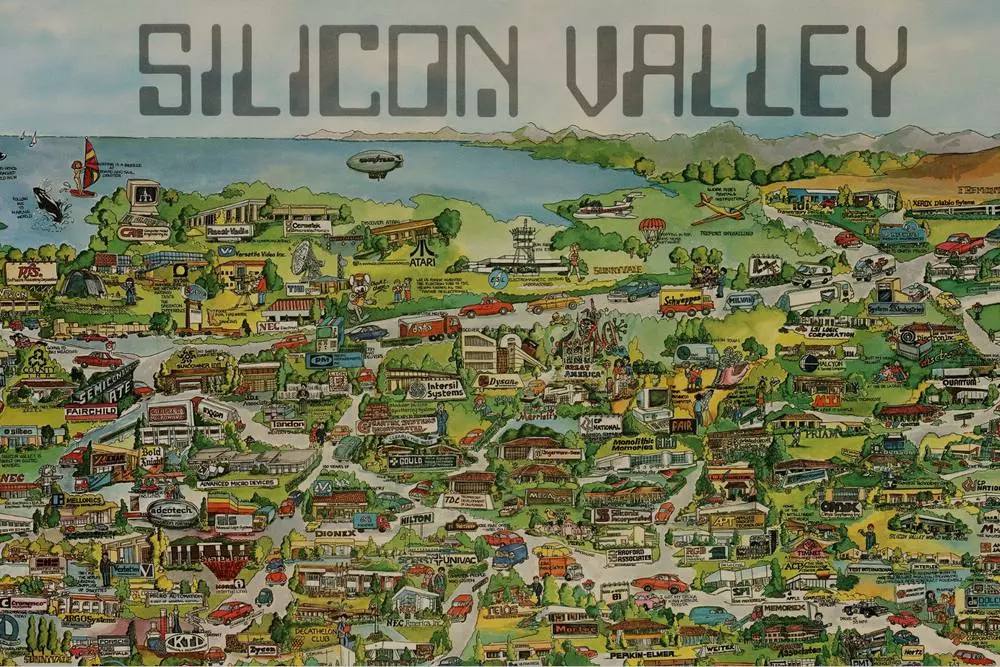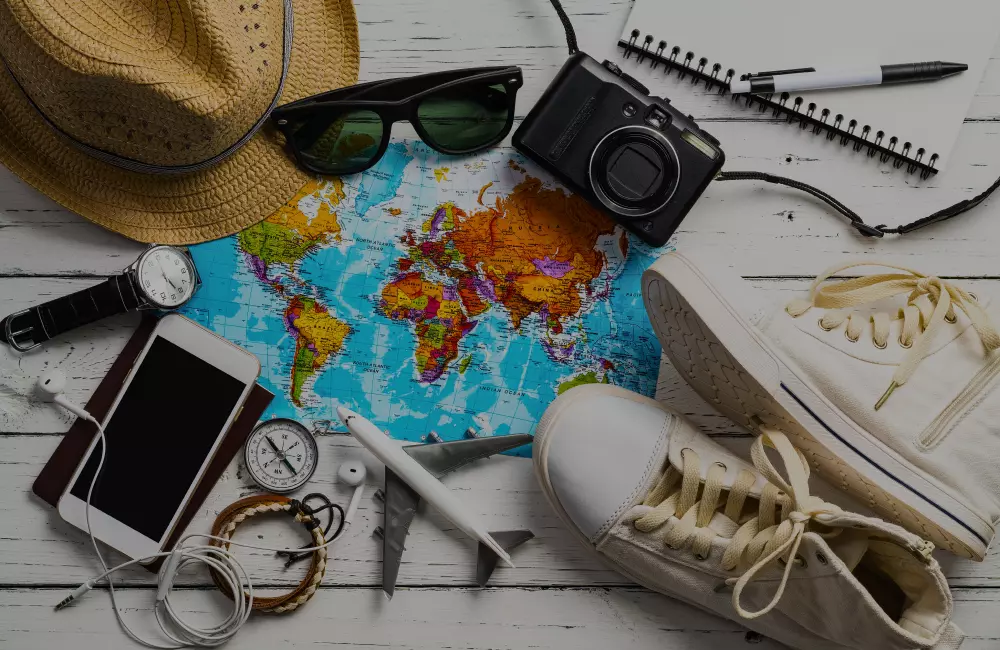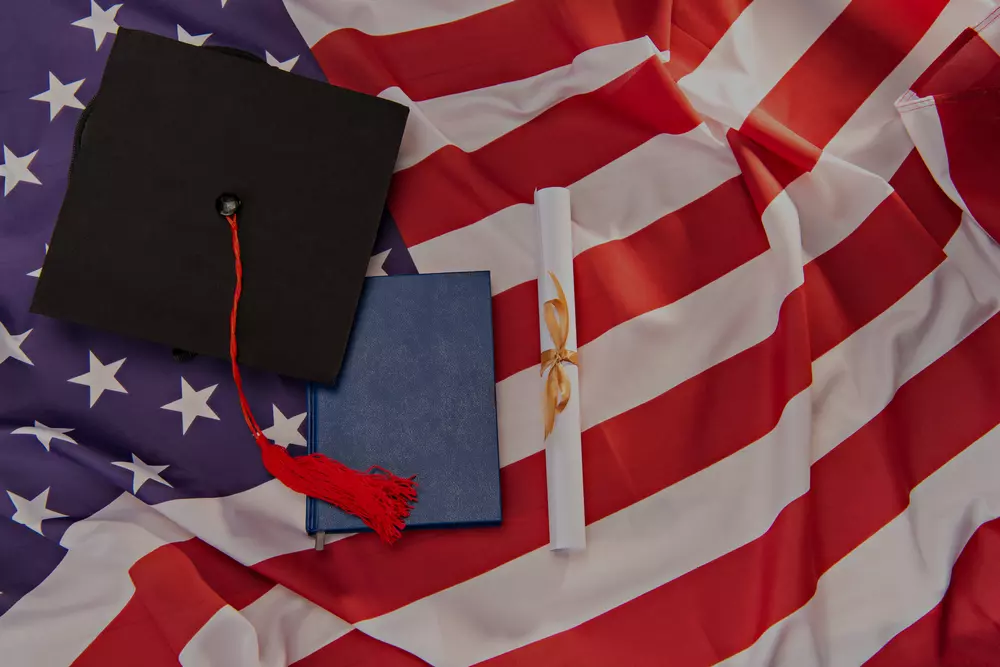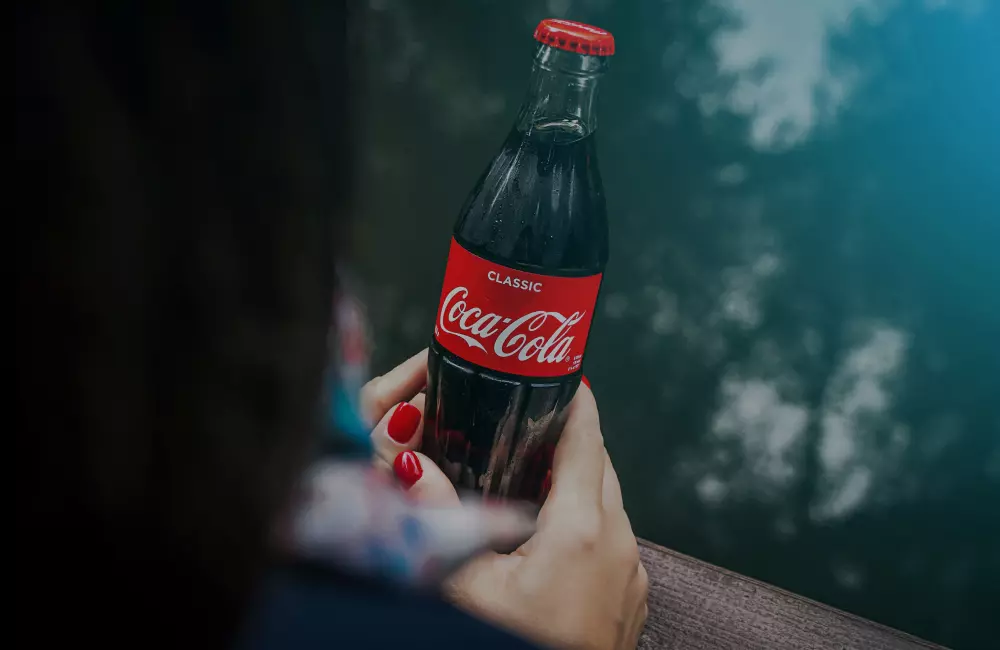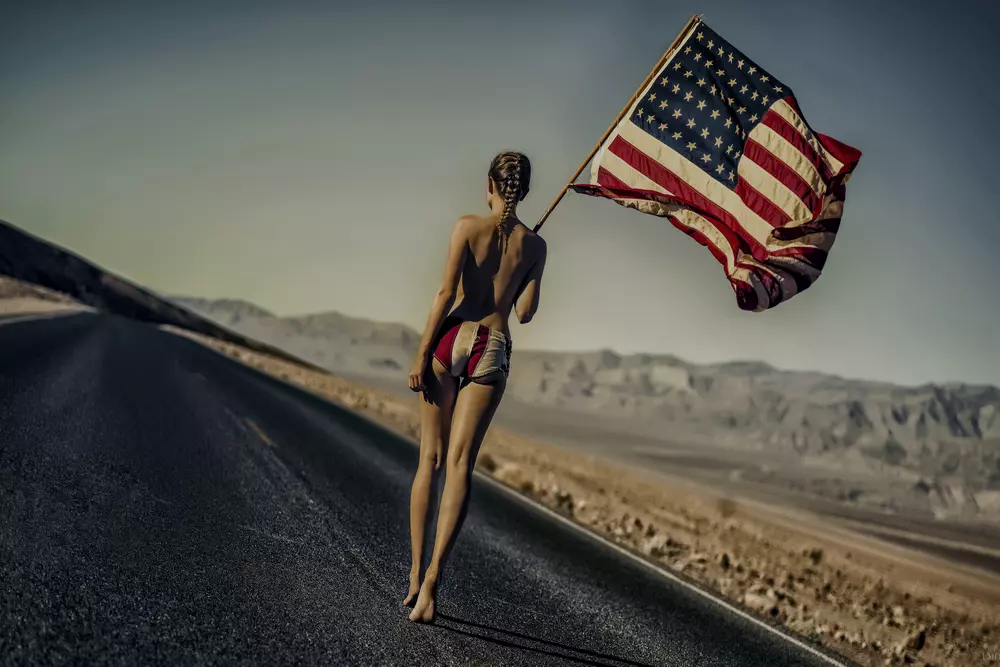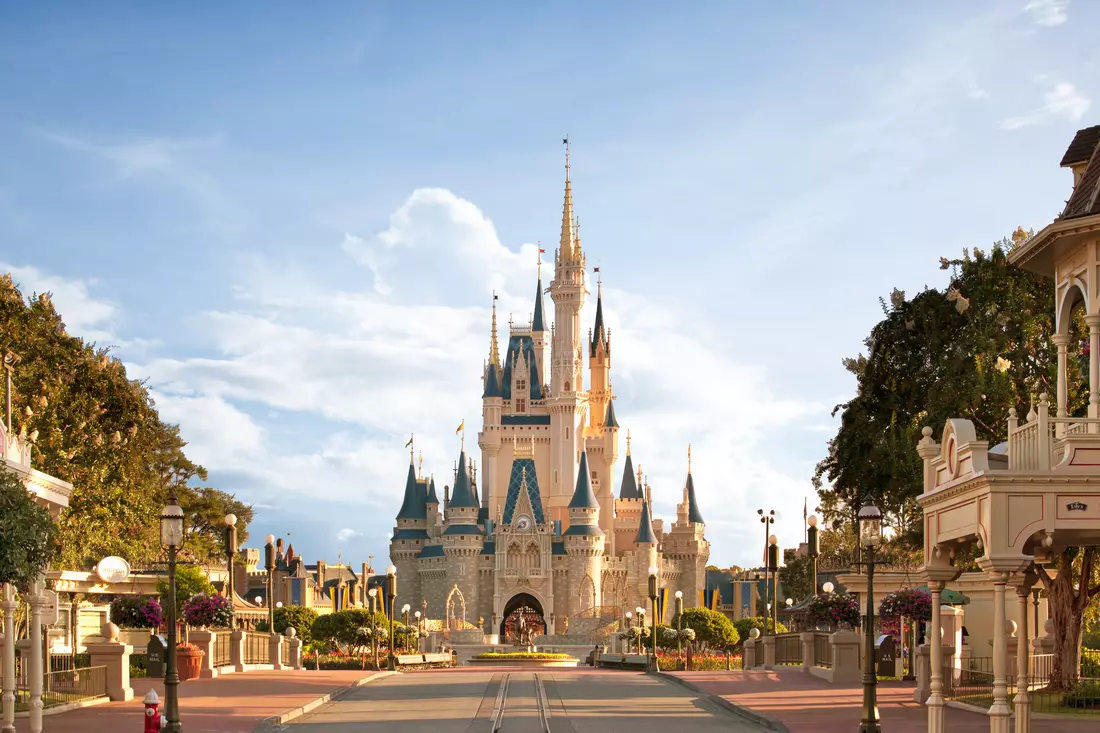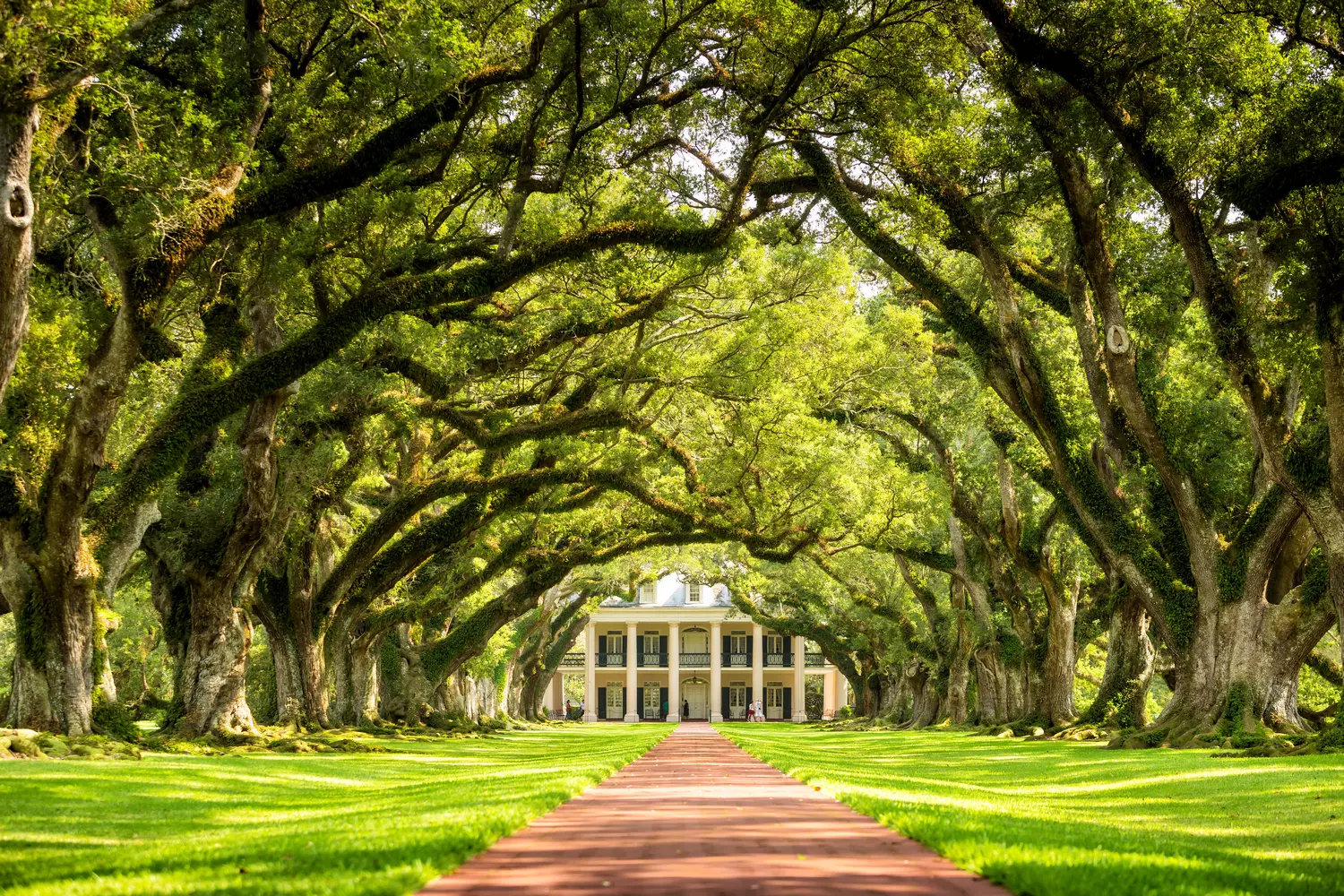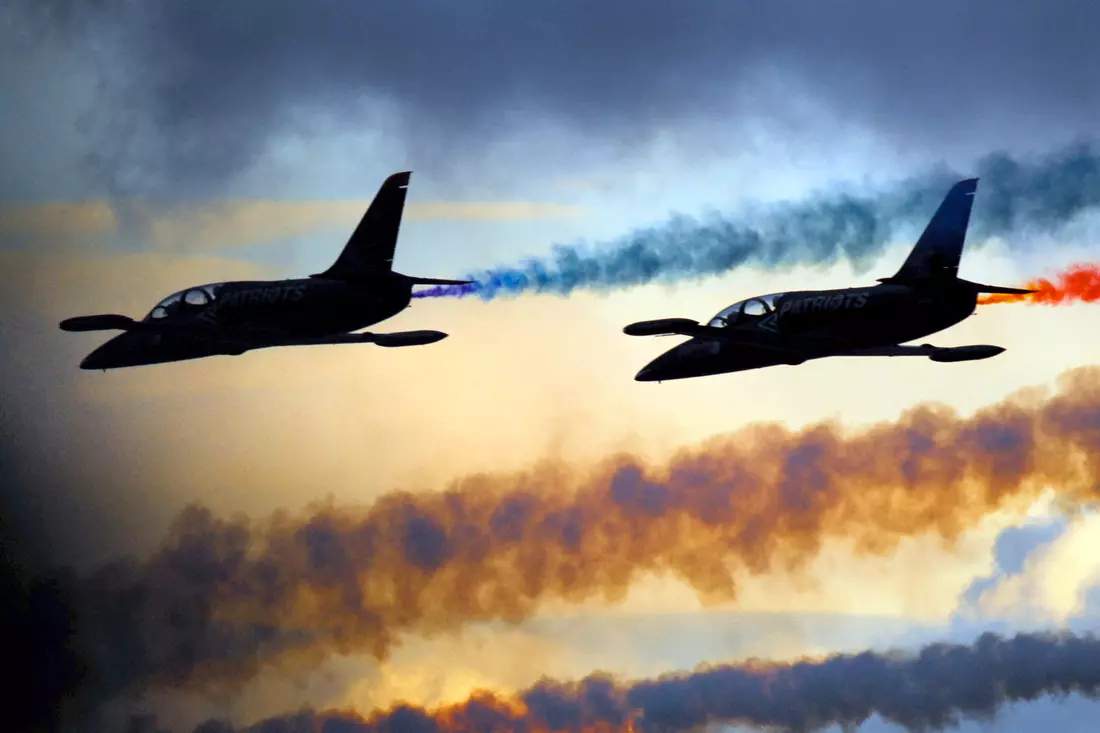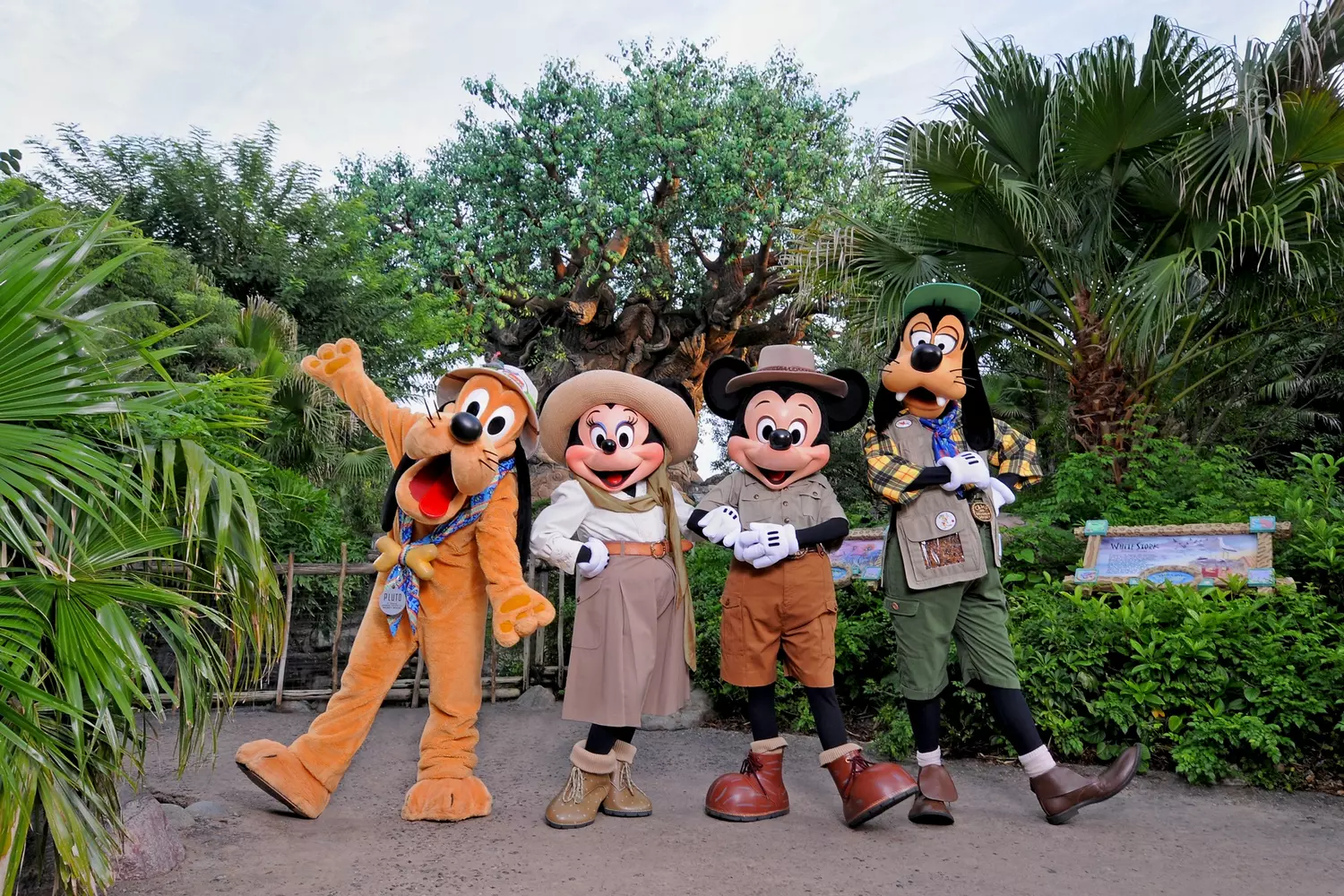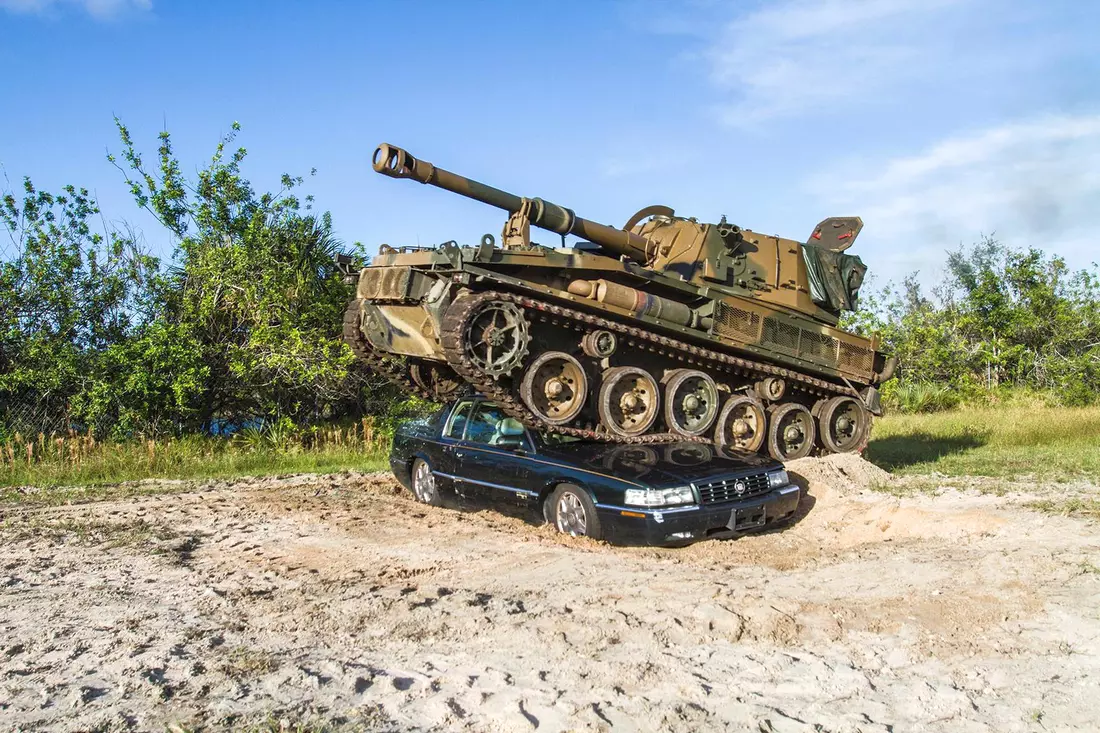December 7, 1941, became a day that would "live in infamy," as President Franklin Delano Roosevelt later declared. On this day, the Japanese army launched a sudden and devastating attack on Pearl Harbor — the strategic U.S. naval base in the Hawaiian Islands. This assault destroyed or damaged over 300 aircraft, sank eight battleships, and claimed the lives of more than two thousand Americans. The following morning, December 8, the U.S. Congress declared war on Japan, and within days — on Germany and Italy. America officially entered World War II, which was already raging across Europe and Asia.
This decision marked a turning point not only for the United States but for the entire course of world history. From isolationism and attempts to stay out of the conflict, America suddenly shifted to active and decisive involvement in the global war. The conflict demanded the mobilization of all resources — military, economic, political, and human.
Before that, the country tried to maintain neutrality. Intense debates took place internally: should the U.S. intervene in a European war that many considered foreign? The U.S. was just beginning to recover from the Great Depression, the economy was stabilizing, and the idea of entering another world war seemed risky to many. Many Americans remembered the horrors of World War I and did not want a repeat. However, the attack on Pearl Harbor instantly changed public opinion. People felt that war had come right to their doorstep.
"America did not want war, but war came to its doorstep."
From that moment, the country began to rapidly reorganize. In a matter of months, industrial capacity was mobilized, the army was expanded, and military technologies were implemented. The U.S. entered the war not as a victim, but as a force ready to change its outcome. And in just a few years, America became a key player in the victory over fascism.
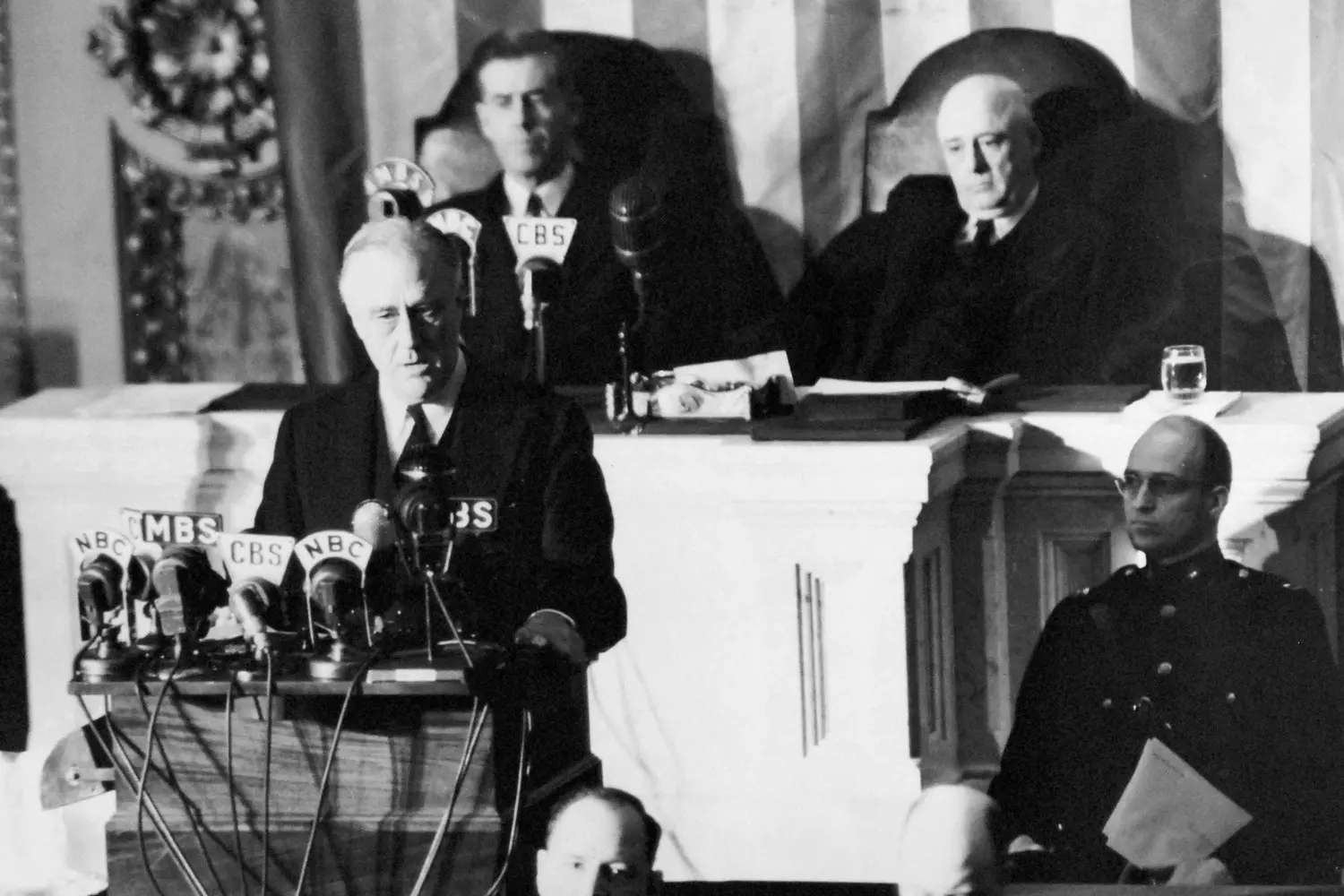
"No one wins a war. It only shows who loses less." — Ernest Hemingway
Toward the Storm: How the Conflict with Japan Was Brewing
World War II for the United States did not begin in 1941, but much earlier — in the shadows of diplomacy, sanctions, and growing distrust. The conflict with Japan was slowly but inexorably brewing. On the surface, relations between the two countries seemed peaceful, but beneath the calm waters, currents were pushing them toward an inevitable clash.
After World War I, Japan increasingly saw itself as a great power. It expanded its reach in Asia, occupying Manchuria in 1931, launching a full-scale war against China in 1937, and dreaming of a “Greater East Asia Co-Prosperity Sphere” — a zone free from Western colonialism. However, America viewed this expansionism as a threat to its interests in the Pacific region.
The U.S. responded to Japan’s actions with increasing firmness:
- In 1940, an embargo on shipments of metals and aviation fuel was imposed;
- In 1941, the U.S. froze Japanese assets and completely cut off oil exports, without which the Japanese army and navy were doomed to paralysis.
“We gave Japan a choice: either retreat or war,” wrote American historian Walter LaFeber.
Tokyo perceived this as an act of aggression. The U.S. threatened Japan’s plans for dominance but did not desire direct war. Washington hoped that the pressure would force Japan to back down. However, Japanese leadership chose a different path — to strike first and attempt to destroy the U.S. Pacific Fleet, thereby dictating terms afterward.
Pearl Harbor: The Morning That Changed Everything
December 7, 1941, Sunday. Early morning. American sailors were just waking up, some preparing breakfast, others enjoying the day off. At that moment, the roar of engines filled the skies over Pearl Harbor, the main base of the U.S. Pacific Fleet in Hawaii. More than 350 Japanese aircraft descended on the base in two waves. The results of the Pearl Harbor attack:
- 21 ships sunk or seriously damaged;
- 188 aircraft destroyed, over 150 damaged;
- 2,403 Americans killed, over 1,100 wounded.
The attack lasted only 90 minutes, but its impact was staggering. Japan intended to deliver a preemptive strike to gain time. Instead, it achieved the opposite: it awakened the American giant. The very next day, President Roosevelt addressed Congress with one of the most famous speeches in history:
“December 7, 1941 — a date which will live in infamy.”
Congress declared war on Japan almost unanimously. Soon after — on Germany and Italy as well. America entered a global war, and the entire 20th century thereafter unfolded with the involvement and influence of the United States.
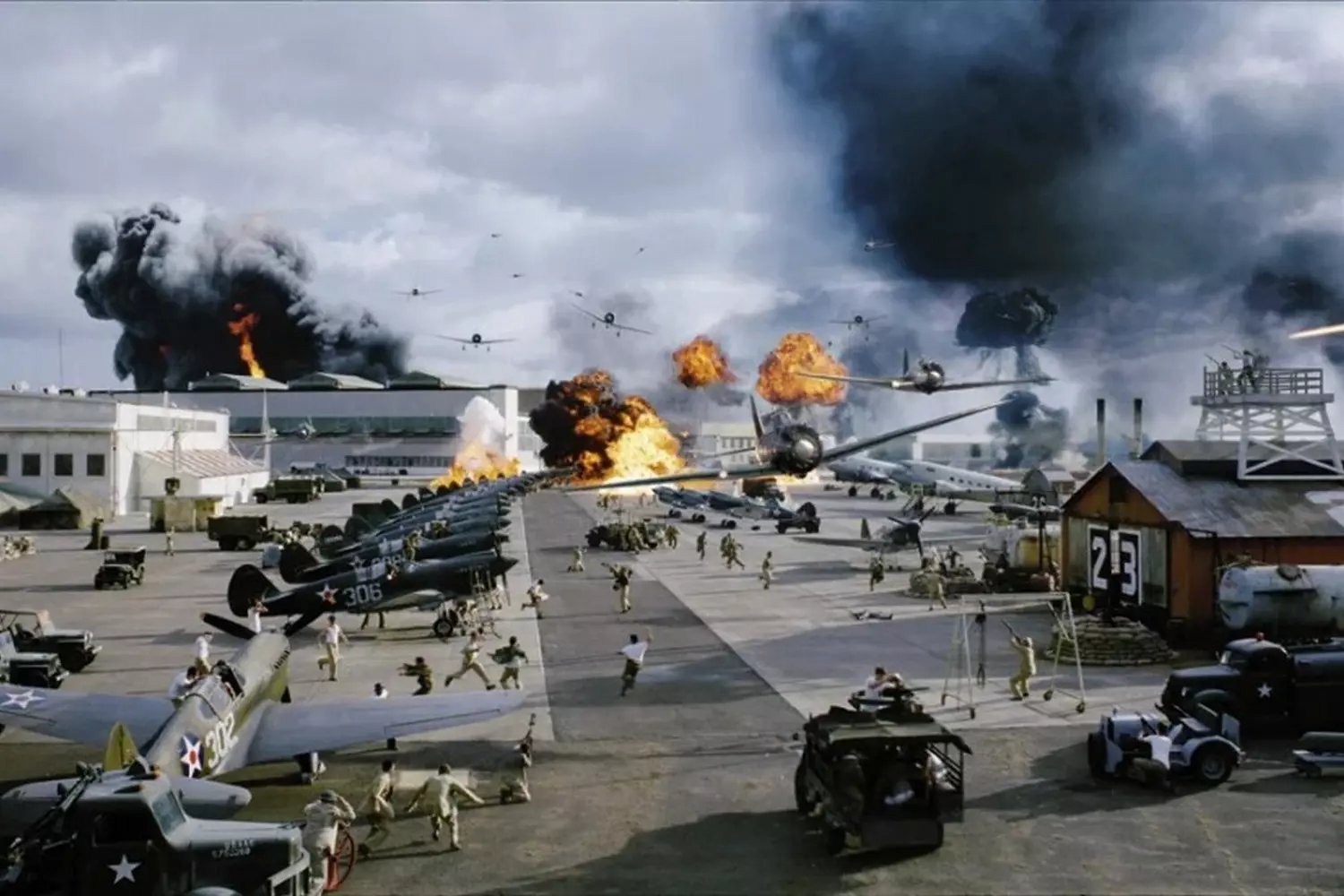
Hell on Water: The Pacific Theater of War
The Pacific Front was a unique chapter of World War II. There were no endless plains or trench warfare here. Instead, there were jungles, atolls, volcanic islands, seas of blood, and desperate fights for every inch of land. It was an exhausting, brutal, and incredibly vast campaign between Japan and the Allies, primarily the United States.
After the attack on Pearl Harbor, Japan rapidly seized vast territories: the Philippines, Indonesia, parts of New Guinea, Burma, Hong Kong, and Malaya. The Japanese army seemed unstoppable. Their goal was to create an empire stretching from Manchuria to Australia. But the U.S. was determined to stop this expansion at any cost.
- 01. Island Hopping Tactics
The American strategy was to avoid assaulting every Japanese base, instead advancing from island to island, cutting Japanese communications and destroying key positions. This approach conserved resources and brought the Allies closer to the ultimate goal — the Japanese home islands. Major battles of the Pacific Front:
- Battle of Midway (June 1942)
A decisive U.S. victory and a turning point in the war. Four Japanese aircraft carriers were destroyed. - Guadalcanal (August 1942 – February 1943)
Exhausting jungle warfare and the first major American offensive operation. - Saipan and the Mariana Islands (1944)
A strategic location from which American bombers could reach Tokyo. - The Philippines (1944–45)
The return of General Douglas MacArthur and restoration of control over the archipelago. - Iwo Jima (February–March 1945)
One of the bloodiest battles. The famous photo of the U.S. flag raising was taken here. - Okinawa (April–June 1945)
The last battle before invading Japan. Losses were staggering: more than 12,000 American soldiers killed and about 100,000 Japanese.
- 02. Brutality and Fanaticism
American soldiers faced unprecedented cruelty. Japanese troops rarely surrendered, preferring death over captivity. Kamikaze attacks — suicide pilots crashing planes into American ships — were common. The harsh treatment of prisoners and civilians by the Japanese fueled American outrage. It was a war for survival on both sides, without sentiment or illusions. - 03. Victory in the Pacific
By summer 1945, the U.S. was close to Japan. Losses on both sides were enormous. An invasion of the Japanese islands was expected to cost millions of lives. Therefore, the decision was made to use atomic weapons.
The bombings of Hiroshima and Nagasaki in August 1945 shocked the world. Japan surrendered on September 2, 1945. Thus, the Pacific War, which began with a sudden strike, ended with an explosion of unprecedented force.
Interesting fact: Over 1,500 warships participated in the Battle of Okinawa — the largest naval battle in human history.
The American Navy, Marines, and Army played a crucial role in this victory, paying a high price. The Pacific became the arena of a battle that forever changed strategic thinking and the moral perception of war.
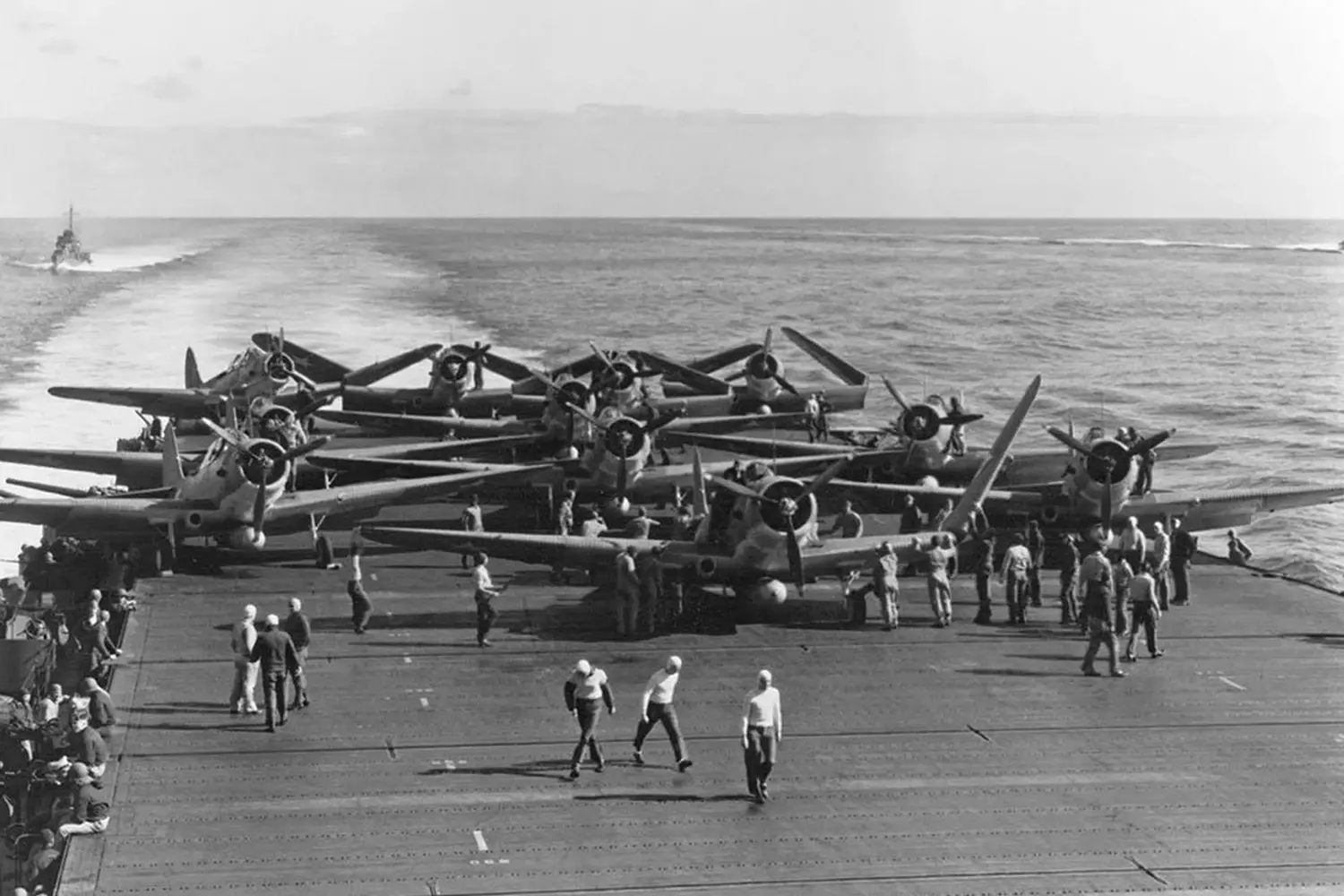
Sand, Blood, and Amphibians: The Mediterranean Theater of War
While fierce battles raged with Japan in the Pacific, another equally dramatic front was unfolding in Europe — the Mediterranean Theater. This theater covered North Africa, Sicily, Italy, and the Balkans. It was here that the United States first engaged directly with the forces of Nazi Germany and Fascist Italy.
For the Americans, this was not only a battlefield but also a test of maturity: how would a newly mobilized army handle well-trained, experienced enemy forces?
- 01. North Africa: The First Step into Europe
In November 1942, the United States and Great Britain launched Operation Torch — a large-scale Allied landing in Algeria and Morocco. The goal was to gain control of North Africa and encircle the German-Italian forces in Tunisia.
American troops faced Erwin Rommel’s forces — the "Desert Fox." The initial battles were tough: unprepared soldiers, poor coordination, and harsh climate conditions. However, by May 1943, the Allies achieved victory, capturing over 250,000 Axis soldiers. This was the largest mass surrender of German troops at that time. - 02. Sicily and Italy: The Road to the Heart of Fascism
In summer 1943, Operation Husky began — the landing on Sicily, which was a logical continuation of the success in Africa. For the first time, the U.S. employed a strategy of massive amphibious and airborne assaults in Europe. The fighting was intense, but Sicily was liberated within a month. Then began the campaign in Italy — one of the war’s most challenging phases:
- The landings at Salerno and Anzio took place under continuous fire;
- The Battle of Monte Cassino became a symbol of the brutal conditions and hardships of mountain warfare;
- The Germans established a strong defense in the mountains and along the "Gustav Line."
Fighting for every town and mountain pass stretched for nearly two years. The U.S. and Allies gradually advanced to Rome, which was liberated in June 1944 — a day before the Normandy landings.
- 03. The Significance of the Mediterranean Front
Many historians debate whether it was worth the U.S. investing so deeply in Italy when the main battle was underway in western France. The answer is ambiguous. However, the Mediterranean theater:
- Distracted major German forces from the Eastern and Western fronts;
- Helped overthrow Mussolini’s regime;
- Became a proving ground for tactics and Allied coordination.
Moreover, Italy saw early signs of the coming "Cold War" — between the Americans and communist partisans fighting for postwar influence.
The Mediterranean campaign cost the U.S. tens of thousands of lives. Fighting in mountains, hurricanes, diseases, artillery barrages, and mines made this front especially bloody. But it was here that the strategy of cooperation among the U.S., Britain, France, Poland, and other Allies was forged.
These battles proved that the American army was capable of fighting not only on home soil but also in hostile lands, shoulder to shoulder with allies, for a common goal.
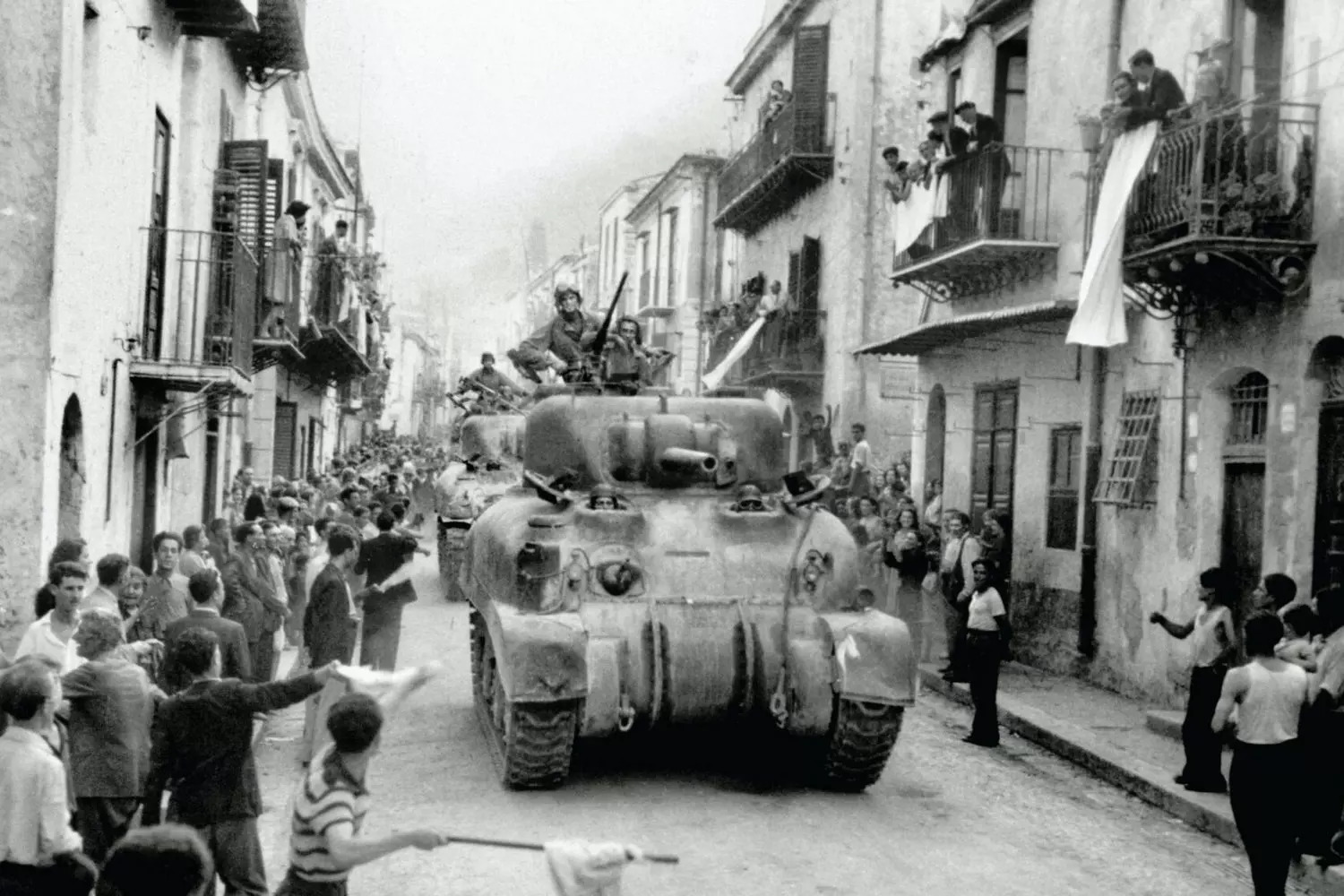
Assault on Europe: The Western Front and the Aerial Destruction of the Reich
If the Pacific front was an oceanic slaughter, and the Mediterranean a prolonged battle for mountains and beaches, then the Western European Theater of Operations became the symbol of liberation and decisive offense. Here, on the plains of France, Belgium, and Germany, the American army conducted one of the largest and most complex operations in its history. But the path to victory was paved not only on land — it was forged from the sky through powerful bombings.
- 01. Bombing the Third Reich: Strikes on the Industrial Heartland
From 1942, the US launched a strategic campaign of massive air raids over Germany. The goal was simple and ruthless: to break the Reich’s economy by destroying factories, railways, depots, and command centers. American aviation — especially the 8th Air Force — operated during the day, bombing plants, infrastructure, ports, and oil facilities. Key aspects of the air war included:
- Strikes on the Ruhr — Germany’s largest industrial region;
- Attacks on aircraft factories and submarine bases;
- Participation in Operation “Gomorrah” — carpet bombing of Hamburg;
- Systematic raids on Berlin.
Interesting fact: by 1945, Americans dropped over 6,000 tons of bombs daily on Germany.
The air campaign weakened the Third Reich, depriving it of resources, equipment, and morale. However, the price was high: thousands of planes lost, tens of thousands of pilots killed, and hundreds of civilian casualties.
- 02. The Normandy Landing: The Day That Changed the World
June 6, 1944, “D-Day.” More than 150,000 Allied troops landed on the beaches of Normandy. It was the largest amphibious operation in history. The Americans stormed Omaha and Utah beaches, facing fierce German resistance.
The fighting was brutal. On Omaha, soldiers literally clawed their way out of the water under heavy fire. But by the end of the day, the beachheads were secured. The US and its allies firmly established themselves on the continent. - 03. Liberation of France and Belgium
After Normandy, a rapid advance began:
- Paris was liberated by August 1944;
- American forces pushed northeast through France;
- Battles were fought for every town and village, often with fierce resistance.
The American army moved like an avalanche: heavy equipment, artillery, supply — logistics on an enormous scale. Meanwhile, the Germans retreated but laid traps and ambushes.
- 04. The Battle of the Bulge: Hitler’s Last Offensive
In the winter of 1944–1945, Germany launched a desperate attempt to change the war’s course — the Ardennes Counteroffensive. In snowy forests and complete radio silence, German tanks and infantry broke the front line and encircled part of the American forces. It was unexpected. The Battle of the Bulge became the largest and bloodiest battle for the US in WWII:
- More than 89,000 American casualties;
- 6,000 killed;
- For the first time in the war, German forces came this close to strategic success.
But the Americans held firm. Reinforcements arrived, and the Germans were pushed back. This battle dealt a final blow to the Third Reich’s resources and morale.
- 05. The Invasion of Germany: Crossing the Rhine
Spring 1945 saw the Allies begin their final offensive. Americans crossed the Rhine, capturing city after city. By April, they reached Leipzig and Dresden, meeting the Red Army on the Elbe River. Concentration camps abandoned in haste by the Nazis shocked even hardened soldiers.
“When we saw Dachau, it became clear: this was not just a war. This was a struggle for humanity,” recalled American sergeant James Baldwin.
Berlin fell on May 2. Germany surrendered on May 7.
The US role in liberating Western Europe was decisive:
- They freed France, Belgium, and the Netherlands;
- Destroyed the Third Reich’s industrial and military infrastructure;
- Brought aid and hope to millions.
The Western Front was the stage for the decisive blow to the Nazi war machine. And although the USSR’s contribution on the Eastern Front was even larger, it was the coordinated two-front advance that secured victory.
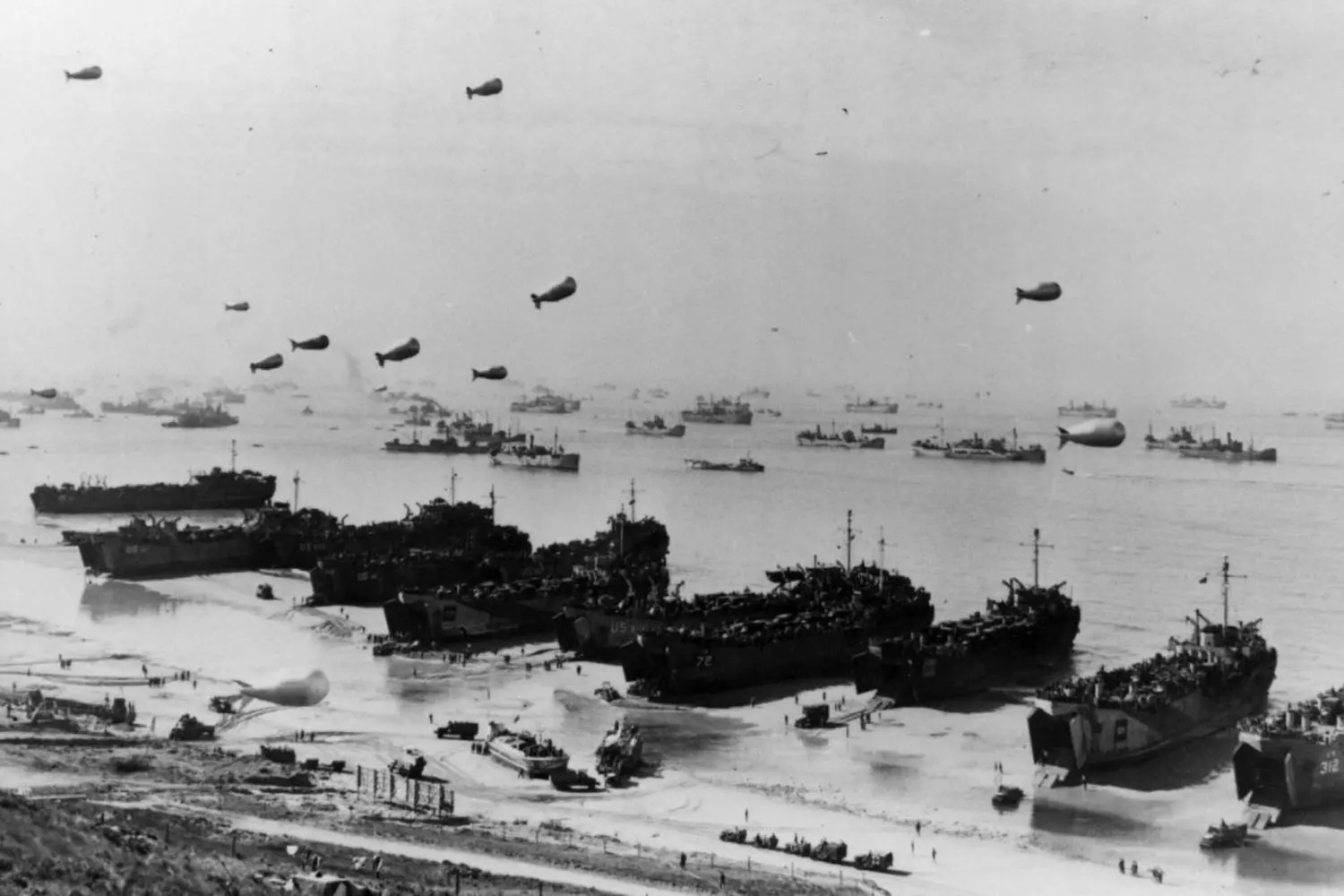
When War Came to the Continent: Attacks on U.S. Soil
Many still believe that World War II bypassed the United States, that Americans only fought overseas, and that the continental part of the country remained completely safe. This is a myth. Although there were no massive invasions, attacks on U.S. territory did occur. Each of these incidents served as a warning signal: the war could reach even here.
- 01. Submarines off the Coast
German U-boats operated off the eastern coast of the U.S. starting in 1942. They sank merchant and transport ships almost right near the shores of New York and Florida. In 1942 alone, German submarines sank over 600 vessels off the American coasts — this campaign was called the "Second Battle of the Atlantic."
Residents of some coastal towns saw flashes on the horizon — the result of torpedo attacks. In response, the U.S. deployed patrols, implemented blackout measures, and strengthened port security. - 02. Bombing of Oregon
In September 1942, the Japanese submarine I-25 approached the coast of Oregon and launched a Yokosuka E14Y seaplane, which dropped incendiary bombs on forested areas in an attempt to start a large-scale fire. This was the only recorded bombing raid on the continental U.S.
The bombs ignited trees, but the fire was quickly contained. The plane disappeared. This attack shocked the military: America realized that even the remote forests of the West could be targets. - 03. Fire Balloons — "Fugo"
The strangest and almost surreal attempt to strike the U.S. were the Japanese "Fugo" balloon bombs. These were hydrogen-filled balloons carrying bombs, launched from Japan and carried by air currents across the Pacific Ocean. Their goal was to cause fires and panic in the U.S. From late 1944 to 1945, about 9,000 such balloons were launched.
- Approximately 300 reached the U.S.;
- One balloon killed 6 people in Oregon — the only confirmed war casualties on the continental U.S.;
- The U.S. government asked the media not to report on the balloon bombs to prevent the enemy from assessing their effectiveness.
- 04. Japanese Plans for Invasion of the Aleutians
In 1942, Japan seized two small islands of the Aleutian chain — Attu and Kiska, part of Alaska. This was the first and only occupation of American territory during World War II. The battles to reclaim the islands were tough: harsh climate, dense fog, mines, and ambushes. By summer 1943, the U.S. had liberated the archipelago.
The attacks on U.S. soil, even isolated ones, led to a sharp increase in mobilization:
- Civil defense and anti-aircraft defenses were strengthened;
- Blackout regulations were introduced in coastal cities;
- Patrols were organized in case of sabotage landings;
- Rumors and spy hysteria spread inland.
All these measures became part of a larger picture: America realized that the war was not only "over there", it was already "right here."
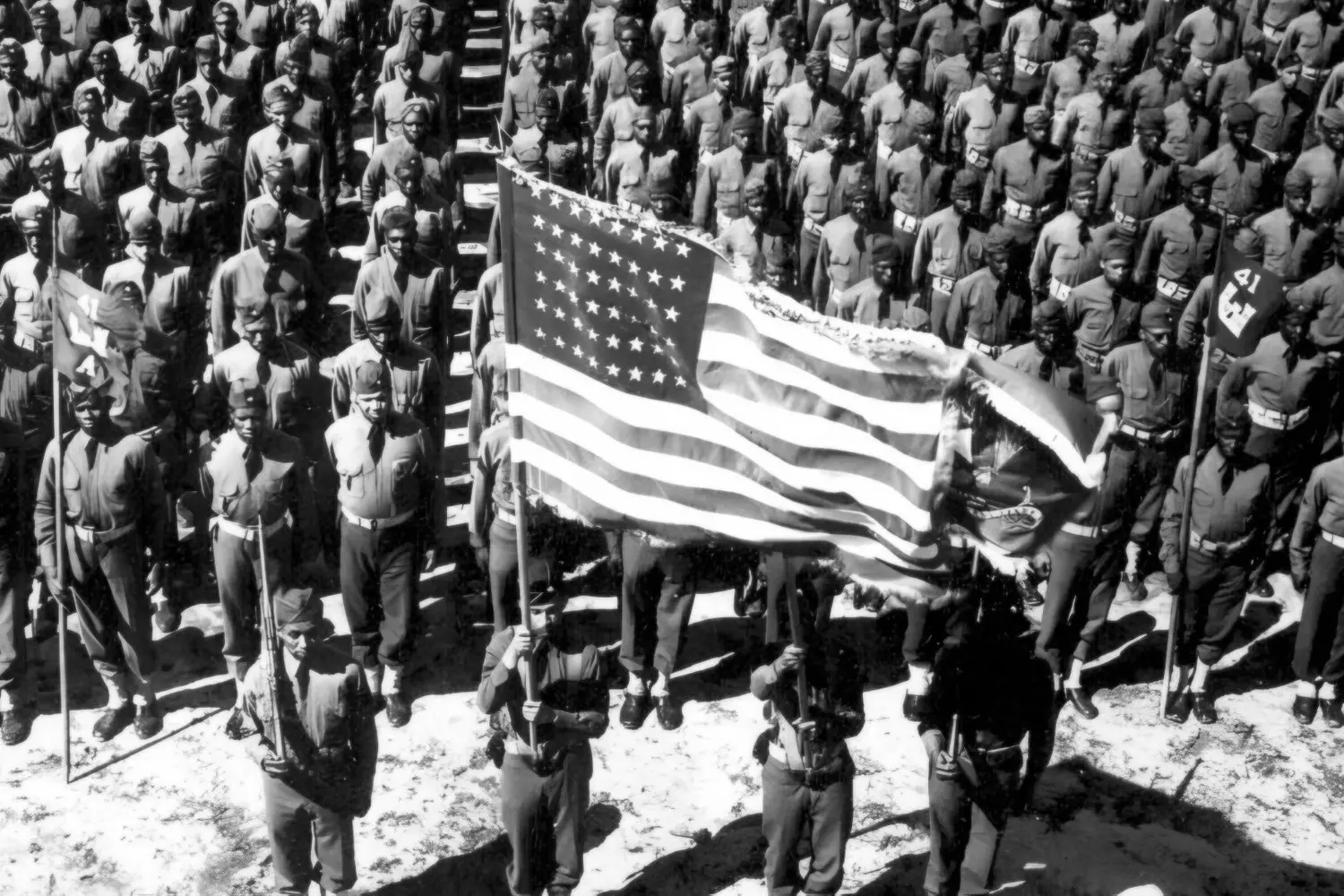
The Arsenal of Democracy: How the War Transformed the U.S. Economy
When Pearl Harbor exploded on December 7, 1941, America’s priorities shifted instantly. The country, still recovering from the Great Depression, transformed within months into a global industrial powerhouse. This was no accident — it was total mobilization.
- 01. Switching to War Production
In December 1941, President Franklin Roosevelt established the War Production Board. Its mission was clear: coordinate industry and supply the military and allies with everything needed. Civilian production sharply declined:
- Car production for private use was completely halted;
- All resources — metal, rubber, fuel — were redirected to the military.
Cars gave way to tanks, planes, guns, and shells. Major corporations like General Motors, Ford, Chrysler, Boeing, and Lockheed switched to producing weapons. During the war, Ford produced one B-24 bomber every 63 minutes.
- 02. Numbers Louder Than Guns
Over four years of war, America delivered staggering results:
- More than 300,000 aircraft, including fighters and heavy bombers;
- About 100,000 tanks, including the legendary M4 Sherman;
- Millions of small arms — from Garand rifles to Browning machine guns;
- Thousands of tons of medicine, food, clothing, and boots — not just for the U.S. but for allies as well.
America supplied not only its own forces but the entire alliance. The USSR, Britain, and France received equipment and resources through the Lend-Lease program.
- 03. Women at the Machines: The Era of “Rosie the Riveter”
Hundreds of thousands of men went to the front lines — and women took their places. Their share in production rose to 37%. The symbol of this new role became Rosie the Riveter, depicted on a poster with rolled-up sleeves and the slogan “We Can Do It!”
- Women riveted airplanes, assembled tanks, operated cranes and lathes;
- For the first time, the number of working mothers skyrocketed;
- This was the beginning of a long fight for equal rights.
- 04. GDP Growth and Unemployment Elimination
The war literally “switched on” the economy:
- Unemployment plummeted from 14% to less than 2%;
- The country’s GDP nearly doubled: from $100 billion in 1940 to $200 billion by 1945;
- Average worker wages rose significantly;
- Tax burden increased, but the public willingly bought war bonds.
The federal government became the largest employer and customer. The private sector did not disappear — it adapted and integrated.
- 05. A New Industrial Map of the USA
The war changed the geography of industry:
- New factories and shipyards were built in the South and West;
- California became a center for aircraft manufacturing and naval bases;
- Detroit — the “Arsenal of Democracy” — produced machinery around the clock.
Entire industrial cities were constructed where tens of thousands lived and worked. American infrastructure — roads, power grids, railways — received a second life.
Military mobilization not only won the war but also:
- Laid the foundation for the future economic dominance of the USA;
- Led to technological breakthroughs (including in nuclear energy, aviation, logistics);
- Changed society: women, migrants, African Americans gained new status in the economy.
The wartime economy was not just an industrial surge. It was a revolution in mindset, capabilities, and social structure.
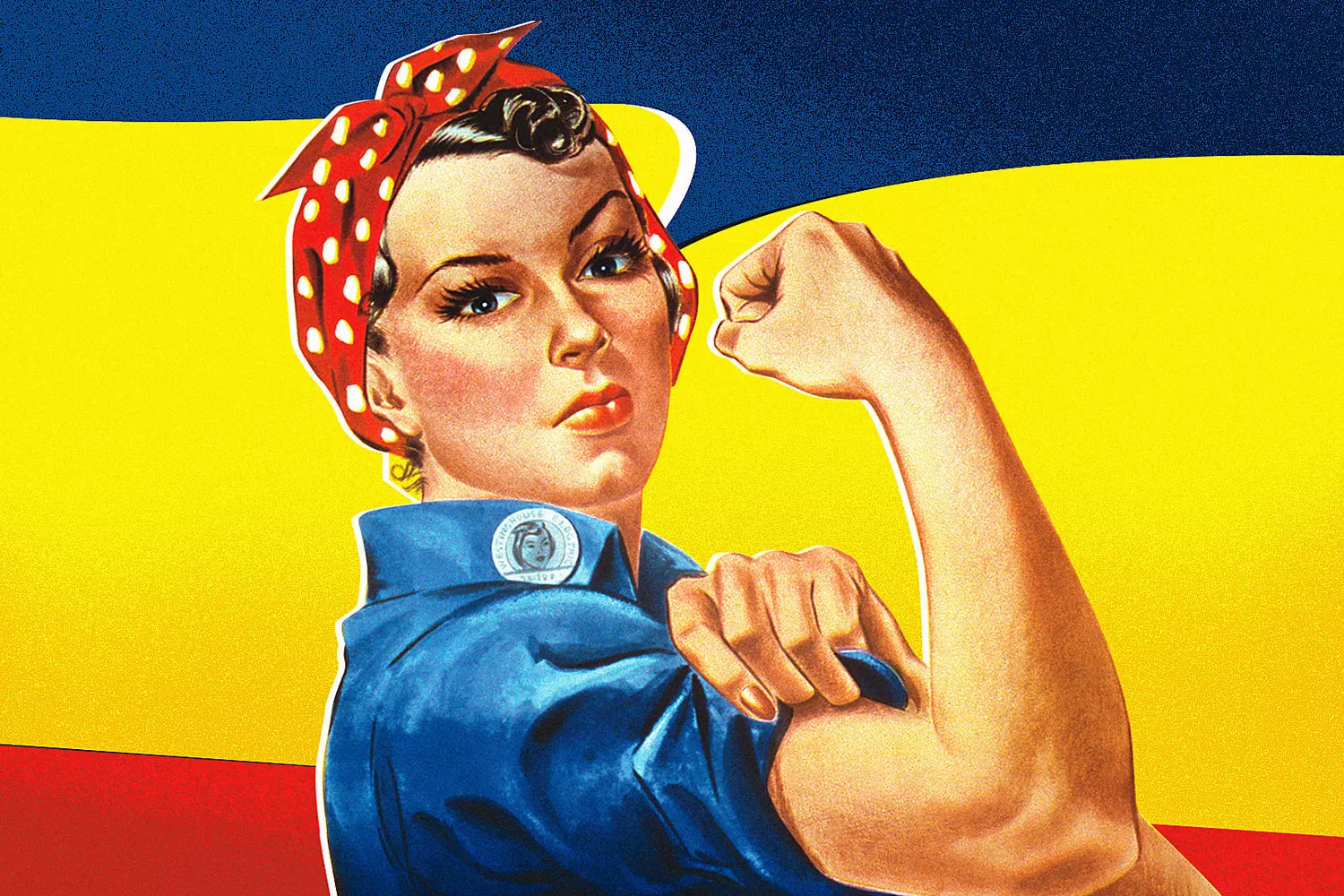
Alliance Against Evil: The U.S. and USSR During the War
One of the most paradoxical alliances of World War II was the union between the USA and the Soviet Union. Despite ideological differences — democracy versus communism — the two superpowers found common ground because they faced a shared enemy: Nazi Germany.
- 01. Lend-Lease: The Logistics of Salvation
The Lend-Lease program became the cornerstone of their cooperation. The USA supplied the Soviet Union with equipment, resources, and food — everything needed to sustain the war effort. This was not merely an act of generosity but a calculated move to hold back the Nazis on the Eastern Front. What the USSR received under Lend-Lease:
- Over 400,000 trucks, including the legendary "Studebakers" — without which mobile fronts would have been impossible;
- Nearly 13,000 tanks, including medium and light models;
- Bombers, fighters, radio stations, diesel engines;
- Food supplies — canned meat, flour, condensed milk;
- Medicines and materials — from morphine to rubber.
The USA established an entire network of supply routes through the Pacific Ocean, the Arctic, and Iran, risking ships and lives. Lend-Lease helped the USSR survive the critical 1941–42 period and launch counteroffensives in 1943–45.
- 02. Politics and Diplomacy: Reluctant Allies
Washington and Moscow actively engaged at the level of ambassadors, military attachés, and personal meetings. There were conflicts, mutual distrust, and espionage. But for the sake of victory, both sides turned a blind eye to ideology. Examples include the Tehran and Yalta conferences where the USA, USSR, and Great Britain decided the fate of the world.
Nonetheless, by 1945 the alliance was already fracturing. Victory was shared, but the postwar world was being carved into spheres of influence. Thus began the Cold War. However, the USA’s contribution to supporting the USSR was decisive in that critical moment.
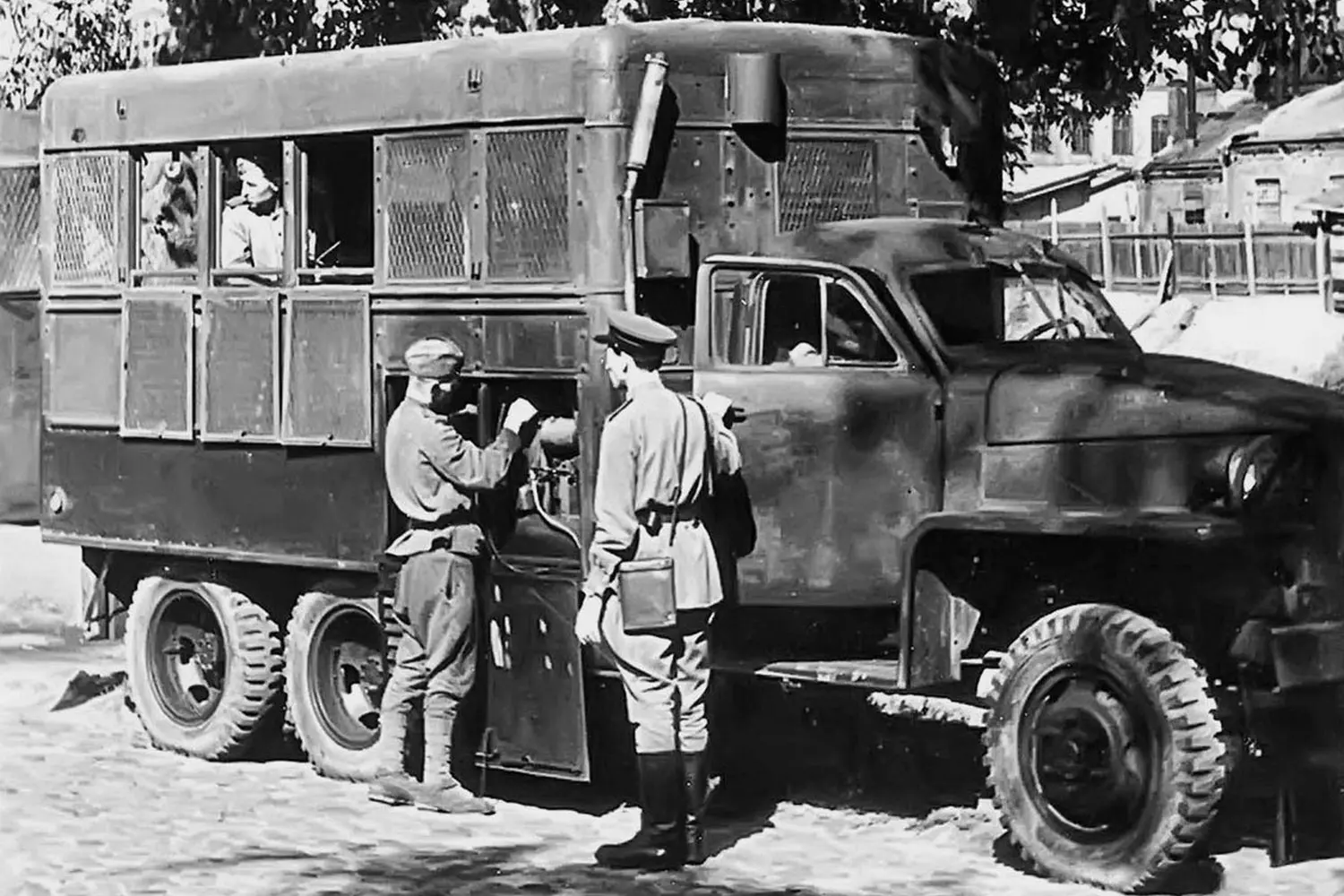
U.S. Weaponry in World War II — From Rifles to Bombers
The weaponry of the USA in World War II was not just a collection of arms and equipment, but the result of immense industrial power, engineering ingenuity, and technological innovations that allowed the American army and navy to dominate battlefields and the skies.
- 01. Infantry weapons: reliability and mass production
The most widespread and iconic weapon was the M1 Garand rifle — the first semi-automatic rifle adopted by the military, which made the US infantry one of the most effective in the world. The Garand fired quickly and accurately, and its 8-round clip gave a significant advantage in combat.
- The Thompson submachine gun — a legendary weapon known as the "Tommy Gun", was popular among tank crews and paratroopers for its high rate of fire and compactness.
- Browning M1919 and M2 machine guns provided fire support at range, playing an important role in both defense and offense.
- For close combat, M1 grenades and bayonets were used, while snipers were equipped with modified Garand rifles.
- 02. Tanks and armored vehicles: power and mobility
The main US tank was the M4 Sherman — reliable, easy to maintain, and mass-produced. Hundreds of thousands were manufactured and supplied to allies. The Sherman was not the most heavily armored or the most powerful tank, but its speed and numbers made it indispensable.
- Special Sherman variants were equipped with flamethrowers or additional armor.
- Light tanks like the M3 Stuart were used for reconnaissance and support.
- Widespread use of armored personnel carriers M3 Half-track ensured rapid infantry deployment into battle.
- 03. Aviation: decisive strikes from the sky
American aviation was one of the most powerful components of the war machine:
- B-17 Flying Fortress and B-24 Liberator — heavy bombers used for strategic raids on enemy industry and infrastructure.
- P-51 Mustang — a fighter with excellent maneuverability and range, protecting bombers and dominating the skies.
- F4U Corsair and P-38 Lightning — aircraft actively used in the Pacific Theater.
- A huge amount of support equipment — transport planes, seaplanes, reconnaissance aircraft.
- 04. Navy: from aircraft carriers to submarines
During the war, the US Navy underwent a transformation:
- Essex-class aircraft carriers became the center of naval operations, replacing battleships.
- Battleships like USS Iowa provided fire support.
- US submarines played a key role in blockading Japan, sinking thousands of enemy ships.
- Torpedo boats and destroyers protected convoys and hunted the enemy.
- 05. Innovations and technologies
The US armament stood out not only for quantity but also for innovations:
- The use of radar for enemy detection.
- Development of automatic sights and sniper equipment.
- Creation of the world's first nuclear weapons — the result of the Manhattan Project.
- Application of new types of explosives and chemical agents.
The American M1 Garand earned the nickname "the best infantry rifle of the war" — General George Patton said that a soldier armed with a Garand was worth three armed with Mosin-Nagant rifles.
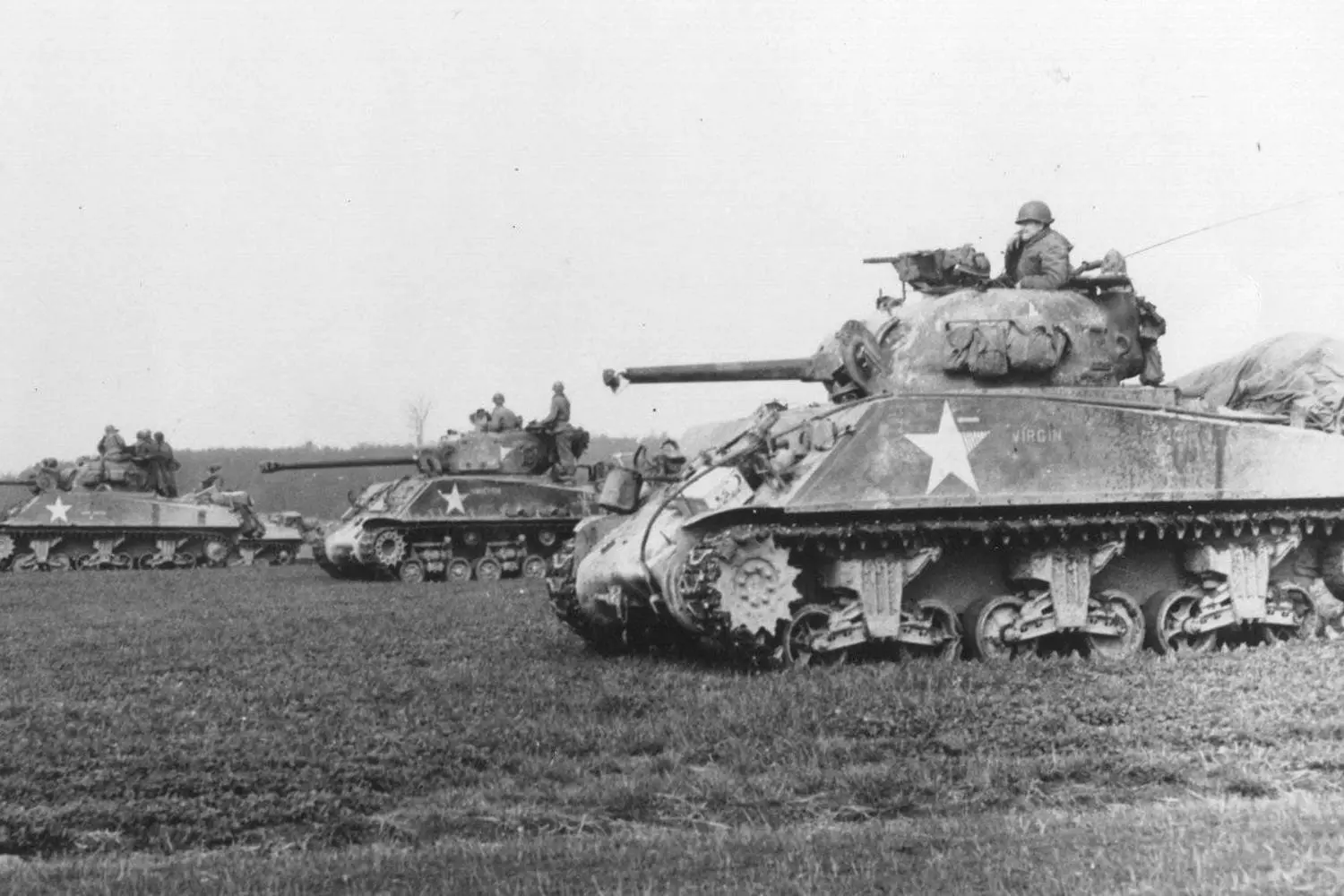
The Home Front: How Millions of Americans Contributed to Victory
As thousands of American soldiers marched off to the battlefields of Europe, the Pacific, and Africa, another equally vast and intense battle was unfolding at home — a battle for production, resources, morale, and national unity. This home front became the backbone of military operations, the guarantee of resilience and victory.
- 01. Mass Mobilization: An Army Thousands of Miles from the Frontline
Over the course of the war, more than 16 million Americans joined the ranks of the army, navy, and air force — soldiers, sailors, pilots, marines, and medics. But equally important was the mobilization inside the country:
- Men were drafted into service, freeing up jobs in industry and agriculture.
- Youth were sent to colleges and technical schools to train engineers and technicians.
- People of various professions and ages became volunteers and activists.
- 02. Education and Civic Training
American schools, kindergartens, and families participated in preparing the younger generation for times of trial:
- Children were taught resource conservation — how to collect metal, paper, rubber, and glass for recycling and reuse.
- School campaigns were launched to collect waste paper and scrap metal.
- Educational institutions emphasized patriotic upbringing and understanding the importance of the war effort.
- 03. Volunteers and Mass Support
Beyond the army and factories, the home front included millions of volunteers who supported the front and society:
- They worked in Red Cross organizations, aiding the wounded and supporting military families.
- Organized fundraising and the purchase of war bonds — financing the country’s defense.
- Helped maintain "Victory Gardens" — gardens grown to produce vegetables and fruits to ensure food security.
Society became a unified machine, where everyone understood that their contribution was part of the overall victory. Work shifts, schools, homes, hospitals — all revolved around supporting the army and the front lines.
“We were all soldiers of the home front. Every can of food, every scrap of metal — that was our little front,” Americans said at the time.
The victory was not only the armed forces' achievement but also the heroism and dedication of millions of citizens who, under difficult circumstances, did everything to ensure America’s triumph. It was this unity, patriotism, and hard work that laid the foundation for a great victory.
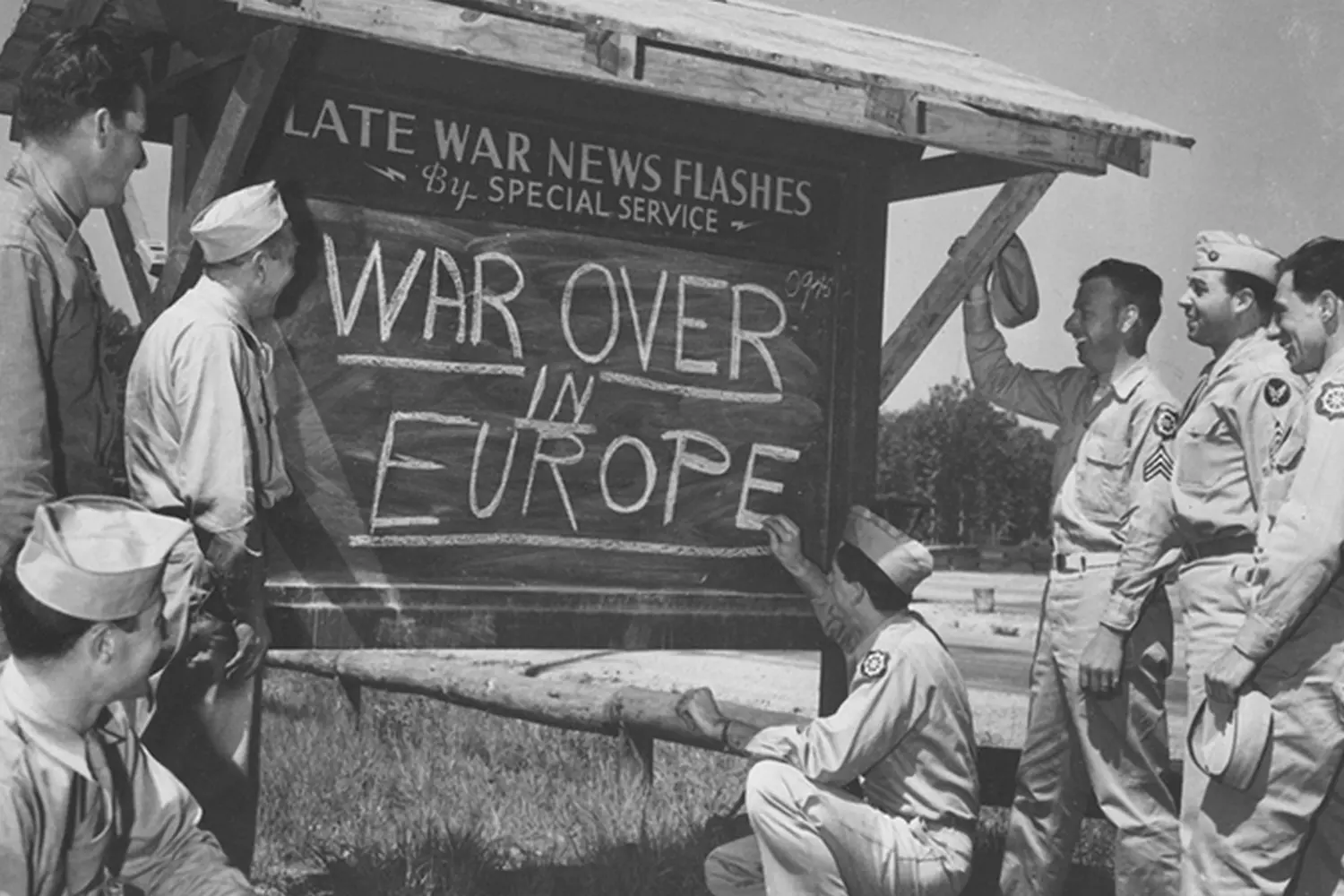
The Nuclear Era and New Geopolitics: How the Bombs Changed the World Forever
August 1945 forever entered history as the moment when humanity first confronted the devastating power of nuclear weapons. The dropping of atomic bombs on the Japanese cities of Hiroshima and Nagasaki was not just the culmination of World War II — it marked the birth of a new era that changed not only military strategy but the entire global political landscape.
- 01. The Manhattan Project: The Birth of Nuclear Weapons
Several years before the war’s end, the USA launched a secret and massive scientific and technical effort — the Manhattan Project. Thousands of scientists, engineers, and military personnel worked to create a weapon of unprecedented power.
- The project cost approximately 2 billion dollars of that time — an enormous amount of money and resources.
- Creating the first atomic bomb required discovering and harnessing new physical laws, including nuclear fission.
- In July 1945, the first explosive nuclear device — “Trinity” — was tested in the New Mexico desert.
- 02. The Decision to Use the Bomb: Swift and Momentous
When Japan stubbornly refused to surrender after fierce battles and bombings, the USA decided to use the newest weapon to hasten the end of the war and avoid further casualties.
- On August 6, 1945, the bomb “Little Boy” was dropped on Hiroshima — instantly killing about 70,000 people, with tens of thousands more dying later from radiation sickness.
- On August 9, the second bomb “Fat Man” was dropped on Nagasaki, killing around 40,000 people.
- Within days, Japan announced its surrender, bringing World War II to an end.
- 03. Moral and Political Debates
The decision to use nuclear weapons has since remained a subject of intense debate:
- Moral Aspect
Some argue that using atomic bombs was necessary to end the war quickly and save millions of lives that might have been lost in a prolonged ground invasion. Others condemn it as the senseless killing of civilians. - Political Context
Many historians believe that demonstrating nuclear power was also a message to the Soviet Union and the start of a new phase of confrontation — the Cold War.
- 04. Nuclear Weapons and a New Geopolitical Order
After 1945, the world changed forever:
- The USA became the first and only country to use nuclear weapons in combat and emerged as the leader of the global military-political order.
- An arms race began between the USA and the USSR, leading to the creation of enormous nuclear arsenals.
- International organizations and treaties emerged aimed at controlling nuclear weapons and preventing their proliferation.
- A new doctrine of deterrence made nuclear weapons a key factor in world politics, influencing strategic decisions and diplomatic relations.
Interesting fact: The first atomic bomb weighed about 4 tons and was nearly 3 meters long. Today such weapons have been greatly miniaturized, increasing the risk of their spread.
The dropping of atomic bombs was a tragic yet pivotal moment in history. It became a symbol of humanity’s power, fear, and responsibility. This new era demanded a global rethinking of war, peace, and security.
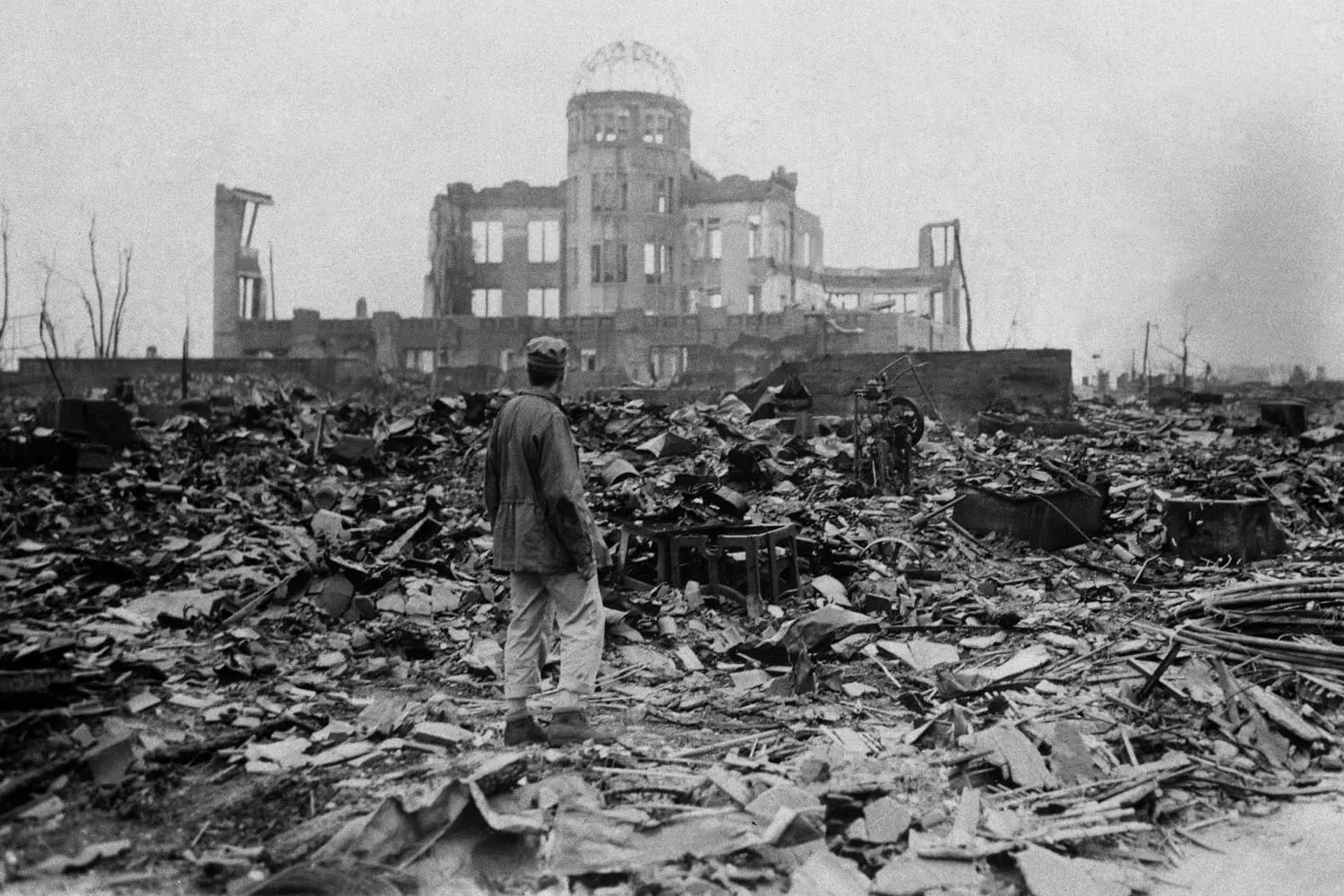
Coming Home: How American Troops Transitioned from War to Peace
When the war ended, millions of American soldiers and officers began returning home. What seemed at first like a joyful and simple process was actually a complex challenge for both the veterans themselves and society. The return from the battlefields of World War II is a story of hope, adaptation, and new challenges.
- 01. The Scale of the Return
By 1945–1946, more than 12 million servicemen had returned to the USA from overseas and various theaters of war. Most had spent several years in the military, enduring horrific battles and losses.
- The return was phased and organized to avoid chaos.
- Military ships and transport aircraft, many converted from combat equipment into passenger vessels, were used for transportation.
- Massive ports on the East and West Coasts received incoming convoys and ships.
- 02. Challenges of Adaptation
Despite the joy of reuniting with family, many veterans faced psychological and social problems:
- Post-Traumatic Stress Disorder (PTSD) — a still poorly understood condition at the time — made it difficult for many soldiers to return to normal life.
- Many veterans experienced feelings of alienation and difficulty finding employment.
- Family adaptation problems — roles and relationships had changed, especially if the family situation had evolved during the war years.
- 03. Rehabilitation Programs and Veteran Support
The American government understood the importance of supporting returning soldiers and developed several key programs:
- The GI Bill (Servicemen’s Readjustment Act) of 1944 provided benefits for education, training, and mortgage loans. Thanks to this, millions of veterans could obtain higher education and buy homes.
- Medical care and psychiatric support began to develop actively.
- Public organizations were created to help veterans with adaptation and job searching.
- 04. Social and Economic Changes
The return of millions of men and women to the labor market and families contributed to:
- Rapid economic growth and the development of the middle class.
- The stimulation of housing construction — the beginning of the suburb era.
- The expansion of educational opportunities, which later influenced the development of science and technology.
Veterans were welcomed with honor, yet many felt the need to find their place anew in peaceful society. The return of troops was not only a homecoming but also the beginning of a new chapter in American history — the building of the postwar world.
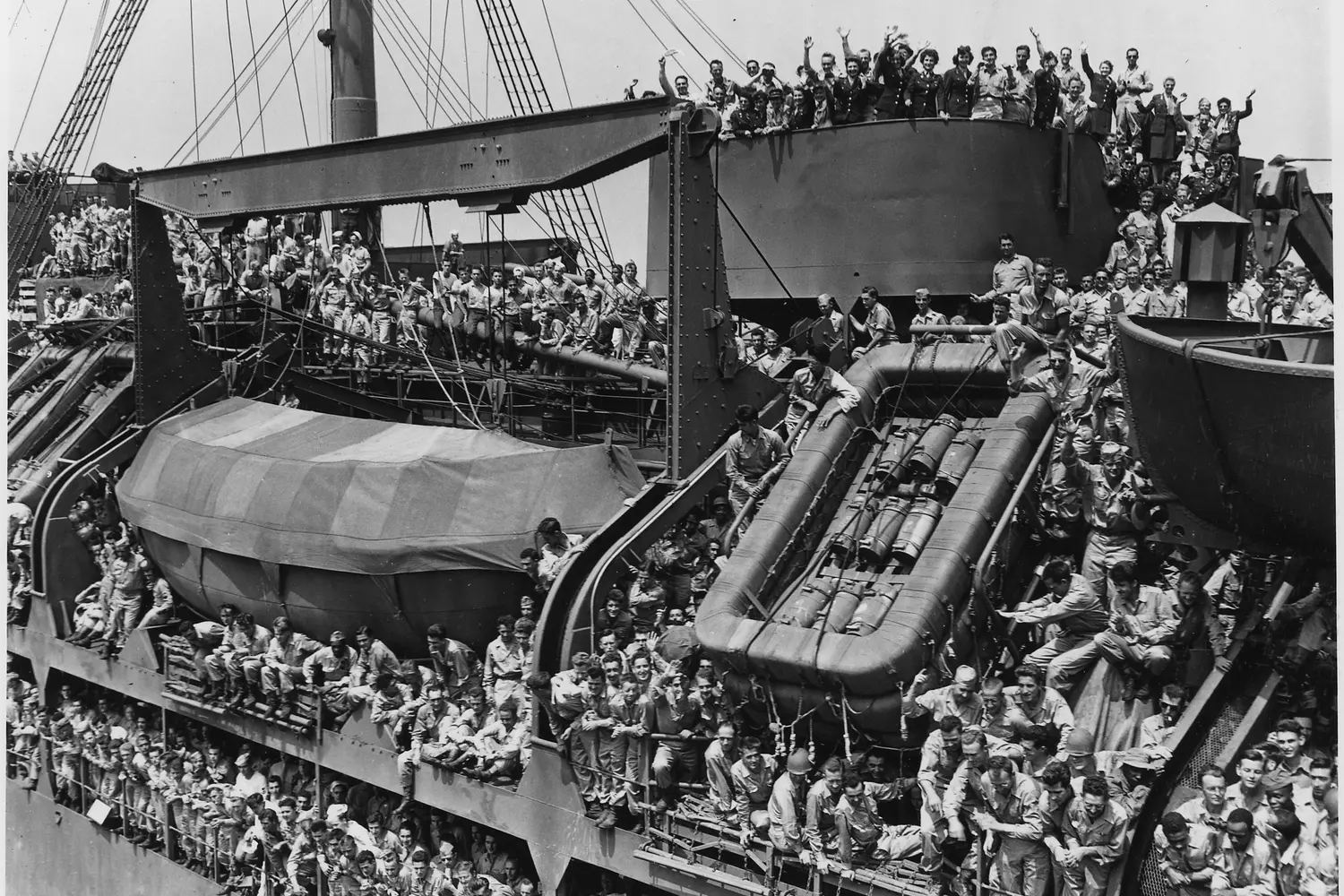
Legends of War: American Generals and Heroes Who Changed the Course of World War II
The Second World War was a stage for outstanding military talents and heroic human deeds. Among the millions who participated, there were those whose strategy, courage, and leadership not only won battles but also forever etched their names into history. This section tells the story of the most famous American generals and heroes whose names still inspire respect and pride today.
Generals Whose Names Became Symbols of Victory
- 01. Dwight D. Eisenhower
One of the most influential commanders, Eisenhower was the Supreme Commander of the Allied Expeditionary Forces in Europe. He led Operation Overlord—the Normandy invasion that marked a turning point in the war. His ability to unite different armies and coordinate massive operations made him the true architect of victory on the Western Front. After the war, Eisenhower became the 34th President of the United States, continuing to serve his country. - 02. George S. Patton
A charismatic and sometimes controversial general, known for his aggressive style of warfare and relentless will to win. Patton gained fame in North Africa, Italy, and the Western Front, especially during the Normandy campaign and the breakthrough into Germany. His famous speeches and strict discipline inspired soldiers, while his maneuvering and rapid tank attacks brought success. - 03. George Marshall
Although Marshall did not command troops on the battlefield, his role as Chief of Staff of the U.S. Army and chief architect of military strategy was pivotal. He coordinated mobilization and army supply, and after the war developed the famous Marshall Plan for Europe’s recovery. - 04. Chester Nimitz
Admiral Nimitz was a key figure in the Pacific Fleet. His strategic decisions in the battles of Midway and the Philippines halted Japanese advances and turned the tide of the war in the Pacific. He excelled in naval tactics and air support, playing a decisive role in victory.
Other War Heroes — Names and Deeds
- James Doolittle
Known as the organizer of the first air raid on Japan — the Doolittle Raid. Despite limited resources and enormous risk, his operation boosted American morale and demonstrated Japan’s vulnerability. - Omar Bradley
A general famed for his care for soldiers and professionalism. He commanded armies in Normandy and played a major role in the Battle of the Bulge, helping allies push deeper into Europe. - Vera Drake and “Rosie the Riveter”
Though not commanders, working women like Vera Drake symbolized the vital civilian contribution to victory. Their hard work on factory floors produced the equipment sent to the front lines. - Jack Jameson — Flying Ace
Considered one of the most successful American fighter pilots. His skill and bravery saved lives and ensured air superiority.
What unites these outstanding figures? Courage, decisiveness, and the ability to make difficult decisions. They inspired thousands and millions, maintaining composure amid chaos and uncertainty. Their strategy and humane attitude toward soldiers became a model for future generations.
Interesting fact: Dwight Eisenhower was not only a military commander but also a skilled diplomat who successfully united the armies of Britain, Canada, the USA, and other allies under his command.
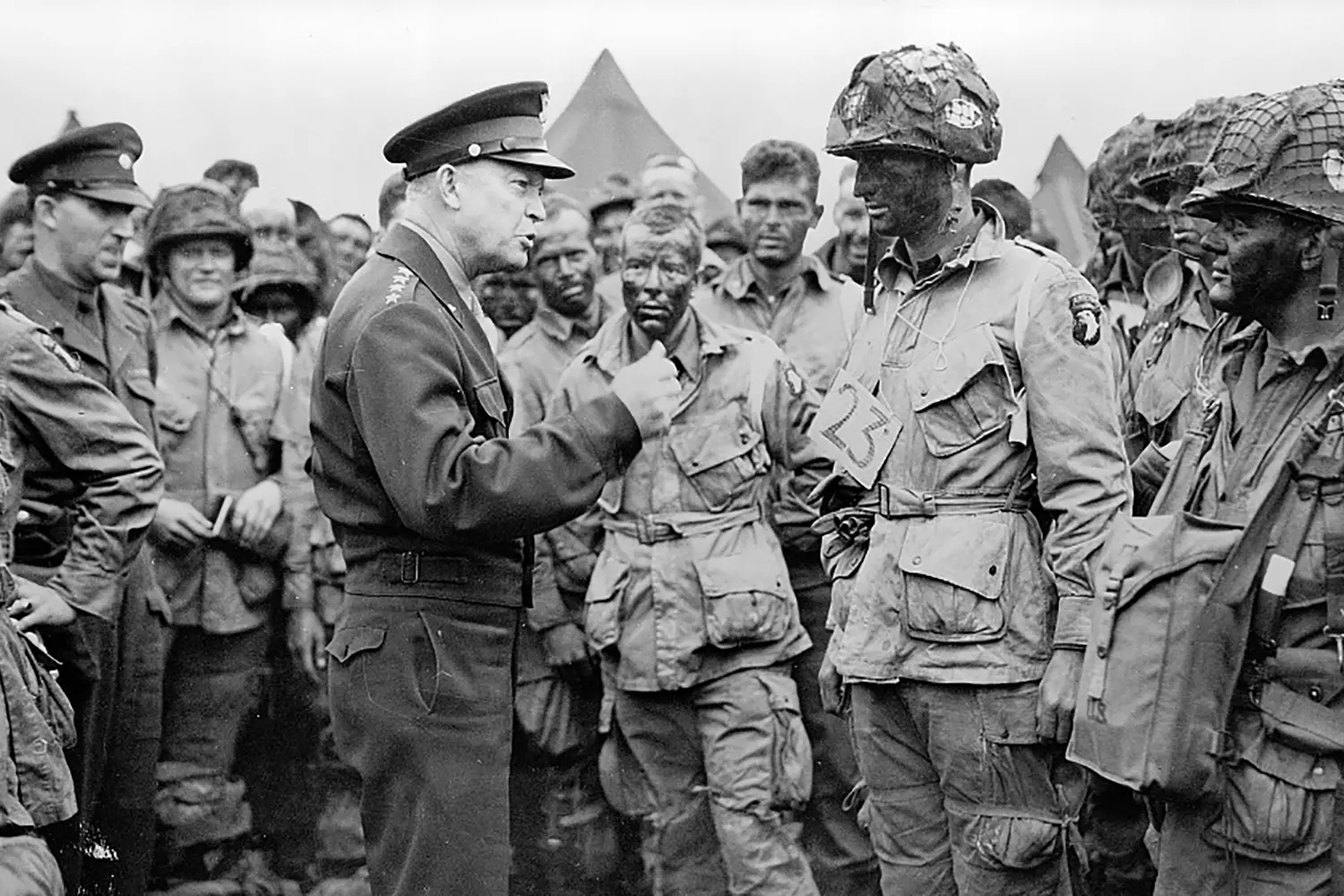
The Holocaust and Its Impact in the USA: Memory, Response, and Consequences
The Holocaust is one of the most tragic and brutal chapters of World War II, during which millions of Jews and other innocent people were systematically exterminated by the Nazi regime. Although the main events took place in Europe, their impact and consequences deeply affected the United States as well. This section tells how American society learned the truth, reacted to the horrors of the Holocaust, and what lessons and changes it brought to the US.
- 01. Realizing the Tragedy: How the US Learned About the Holocaust
During the war, information about the mass extermination of the Jewish people reached the US gradually and often distorted:
- In 1942, the US government officially acknowledged that the Nazis were carrying out systematic extermination of Jews.
- However, initially many Americans regarded this as rumors or propaganda.
- Journalistic investigations, intelligence reports, and refugee testimonies gradually revealed the true scale of the tragedy.
- 02. Government and Public Reaction
- The US established the War Refugee Board in 1944 to help victims of Nazism, though many criticized the government for a late and insufficient response.
- An active public debate began about the need to aid refugees and support European Jews.
- American Jewish organizations played a key role in raising awareness, organizing campaigns, and providing assistance.
- 03. The Holocaust and American Jewry
The tragedy united the Jewish community in the US, strengthening the sense of solidarity and responsibility:
- Many American Jews lost relatives and friends.
- There was increased activism against anti-Semitism and for human rights.
- In the postwar period, educational programs began to emerge in the US aimed at Holocaust studies and preventing similar crimes.
- 04. Trials and Punishment of War Criminals
- The US actively supported the Nuremberg Trials, where Nazi leaders were held accountable.
- In subsequent decades, the American legal system also took part in identifying and prosecuting former Nazis hiding in the country.
- These trials helped strengthen international law and underscore the importance of justice.
- 05. Consequences and Lessons for the US
The Holocaust became a turning point for American society and politics:
- The strengthening of the human rights movement and the fight against racism.
- A realization of the importance of genocide prevention and international cooperation.
- The establishment in the US of museums and memorials such as the Holocaust Museum in Washington and the Miami Holocaust Memorial, which serve as centers of remembrance and education.
The memory of the Holocaust in the US is not only a tribute to the victims but also a reminder of the need to combat intolerance and violence in all its forms. This tragedy teaches us to value humanity and stand guard over justice.
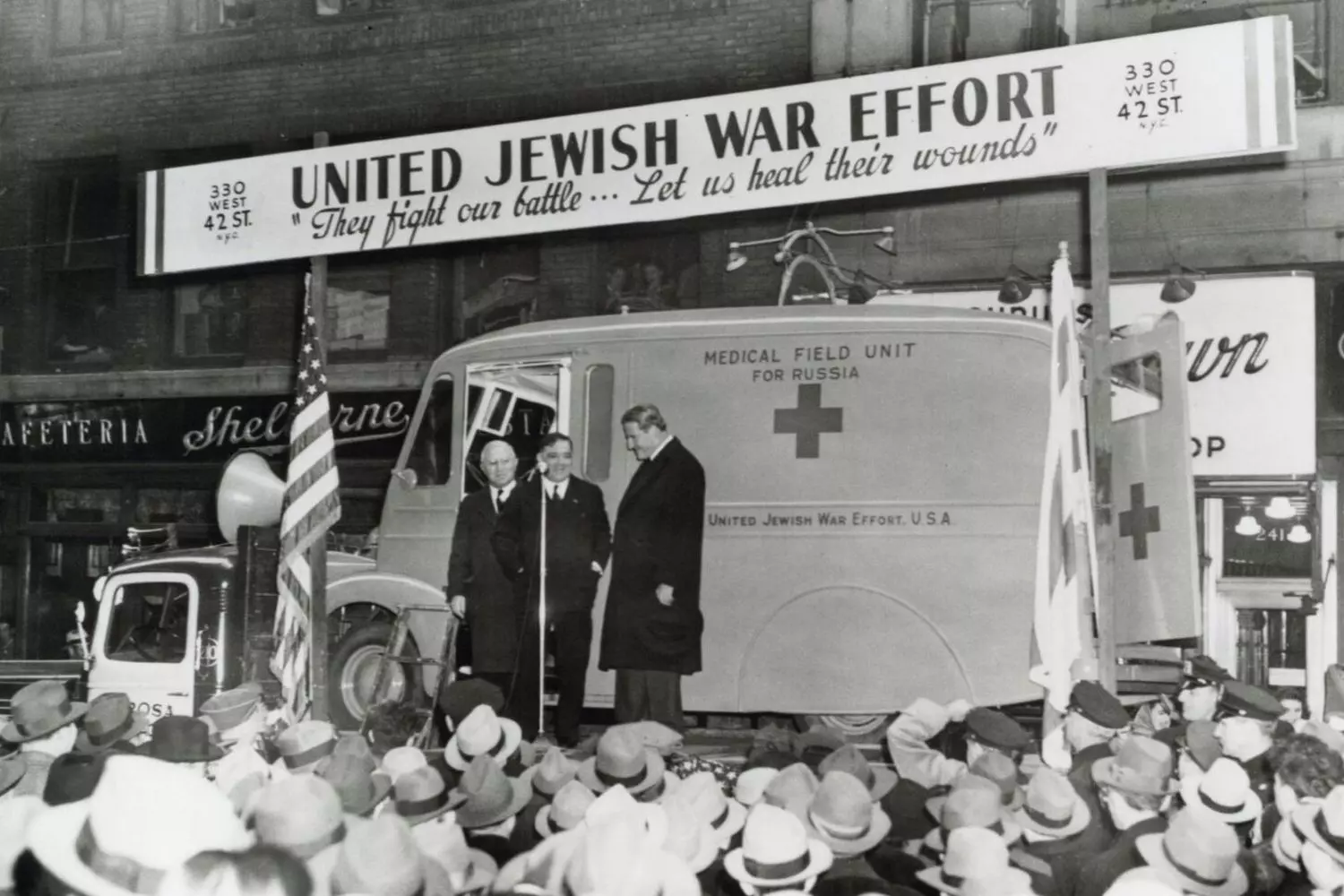
Dark Pages of Victory: Scandals and Controversies of the U.S. in World War II
The great victory in World War II was not without its dark and controversial episodes. Behind the shine of triumph lay complex political maneuvers, disputed decisions, and even scandals that later became subjects of heated debates and investigations. In this section, we will explore the most notable of these — from suspicions of economic cooperation with Nazi Germany to the postwar sheltering of war criminals.
- 01. Economic Ties with the Nazis: Truth and Speculation
Before the US entered the war, there were ambiguous relations with Germany. American companies, operating under neutrality, continued business dealings, which sparked much controversy.
- Some major corporations, such as Ford, General Motors, and IBM, faced criticism for supplying equipment and technology ultimately used by Germany.
- In particular, IBM provided data processing services using its machines for population accounting and possibly administrative needs of the Nazis.
- There is also contentious evidence that some American banks continued financial transactions with German companies.
However, officially such cooperation was limited and under constant supervision, and after 1941 any ties with the enemy were severed.
- 02. Sheltering German War Criminals: “Paperclip” Operation and “Phoenix” Operation
After the war, one of the most notorious topics emerged — the sheltering and assistance to fugitive Nazis and war criminals in the US and its allied countries.
- Under secret programs of the CIA and other agencies, the US helped former Nazi officers avoid trial and escape to Latin America and other countries.
- It is known that several US intelligence officers had connections with former Wehrmacht officers, using their knowledge to counter the Soviet Union.
- The operation “Paperclip” (also known as “Phoenix”) were code names for covert missions evacuating Nazis.
These actions caused a storm of criticism, accusations of moral compromise, and conspiracy. Many victims of Nazism and their families saw this as betrayal.
- 03. Other Controversial Issues and Investigations
- Internment of Japanese Americans
During the war, the US government decided to forcibly detain over 120,000 Japanese Americans in camps, which today is recognized as a violation of civil rights. - Division of Loot and Resources
In the postwar period, conflicts arose among allies over the distribution of reparations, property, and technology. - The Manhattan Project and Secrecy
The secrecy and the heavy casualties among project workers raised questions about safety and ethics.
Open discussion of such topics helps to understand that war is not only about heroism and victories but also about complex moral choices. Acknowledging mistakes and contradictions contributes to a more honest historical perspective and helps prevent the repetition of such situations.
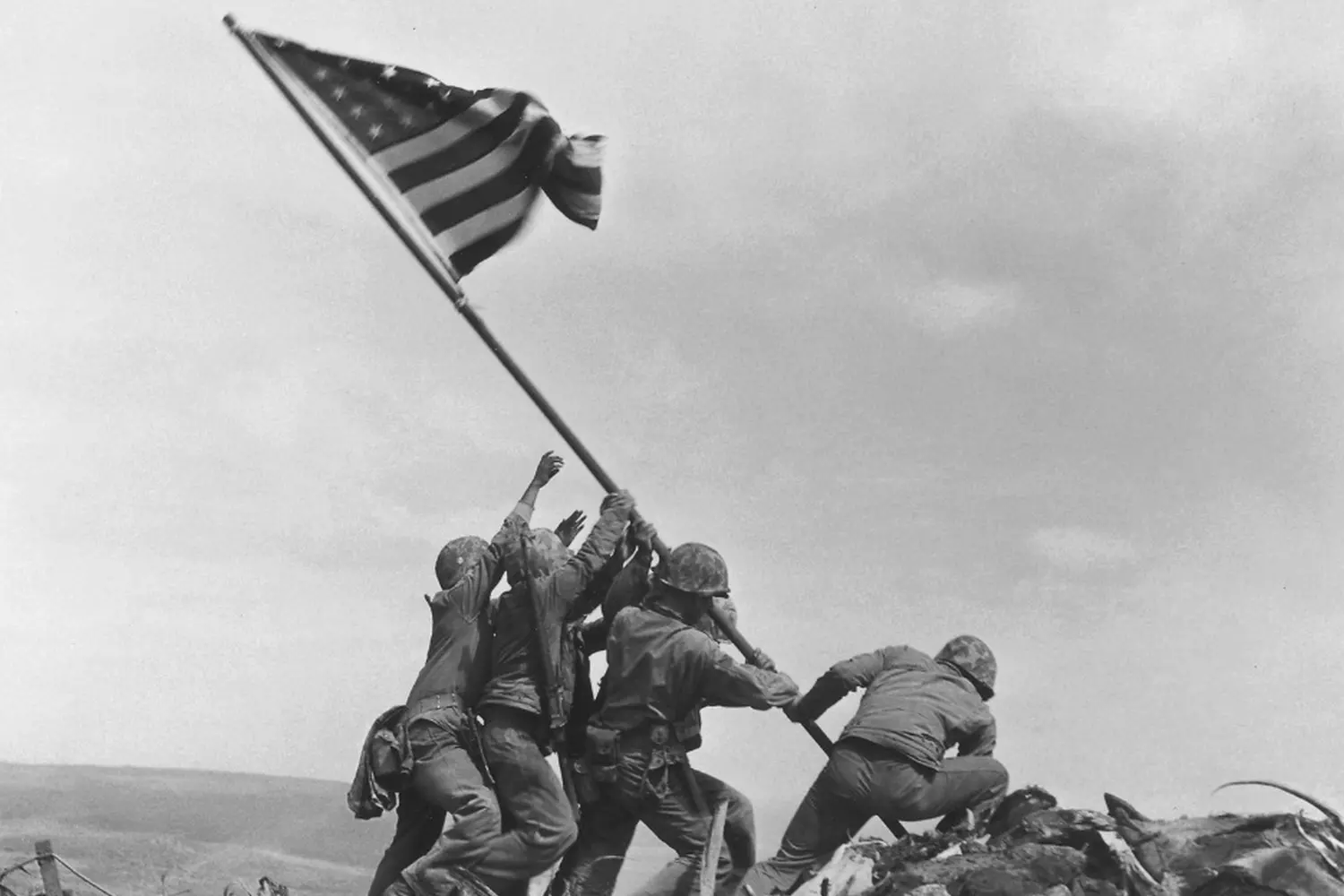
Culture, Memory, and Legacy of World War II in the USA: How History Became Part of the National Consciousness
World War II left a profound mark on the history and culture of the United States — its consequences are still felt today. It is not just an event of the past, but a vital part of the national identity that shapes ideas about heroism, responsibility, and the lessons of history. From memorials and textbooks to cinema and literature, the memory of the war lives in every corner of American life.
- 01. Memorials — Stone Witnesses of the Past
One of the most prominent symbols of remembrance is the World War II Memorial in Washington, D.C. — a granite complex with 56 pillars, each representing a state, territory, and allied nations. It embodies gratitude and respect for the millions who gave their lives or labored for victory. Additionally, hundreds of monuments and memorials are established across the country:
- Memorials in cities and parks dedicated to specific units and battles.
- Military cemeteries such as Arlington, where thousands of heroes rest.
- Museums where artifacts, photographs, and documents from that era can be seen.
These places have become centers for national holidays such as Memorial Day and Veterans Day.
- 02. Education and Schools: Lessons of History
In American schools, World War II is a mandatory part of the history curriculum. Teachers strive not just to recount dates and facts but to show the complexity and multifaceted nature of events.
- Special attention is paid to the causes of the war, its impact on society, and moral dilemmas.
- Biographies of famous individuals, stories of soldiers and families are studied.
- Documentary films, veteran interviews, and modern research are used.
This helps new generations understand the price of freedom and the importance of civic responsibility.
- 03. Cinema and Literature: War as a Source of Inspiration
American cinema and literature have made the war one of the main themes:
- Classic films — "Saving Private Ryan," "Letters from Iwo Jima," "The Bridge on the River Kwai" — depict frontline realities and human stories.
- Documentary chronicles such as "World War II in Color" and "The Americans at War" help keep the memory alive.
- In literature — from veterans’ memoirs to fictional works — the war theme remains relevant and instructive.
These works not only entertain but also foster respect for the feats and complexities of wartime.
- 04. Commemorative Dates — Times of Unity and Remembrance
The US observes several key commemorative dates related to World War II:
- Memorial Day — the last Monday of May, dedicated to remembering those who died in wars, including World War II.
- Veterans Day — November 11, honoring all armed forces veterans.
- Victory over Japan Day (V-J Day) — September 2, marking Japan’s surrender and the end of the war.
- D-Day — June 6, dedicated to the Normandy landings, one of the war’s key operations.
On these days, parades, wreath-laying ceremonies, educational programs, and public events are held.
- 05. Morality and Lessons of War in Modern Society
The war is viewed in the US as a time of great trials and heroism but also as a source of complex questions:
- How to maintain peace and prevent new conflicts?
- How to remember the victims and not forget the lessons of history?
- What is the cost of freedom and how to value it?
Americans understand that victory came at a high price — millions of lives and profound changes to the country.
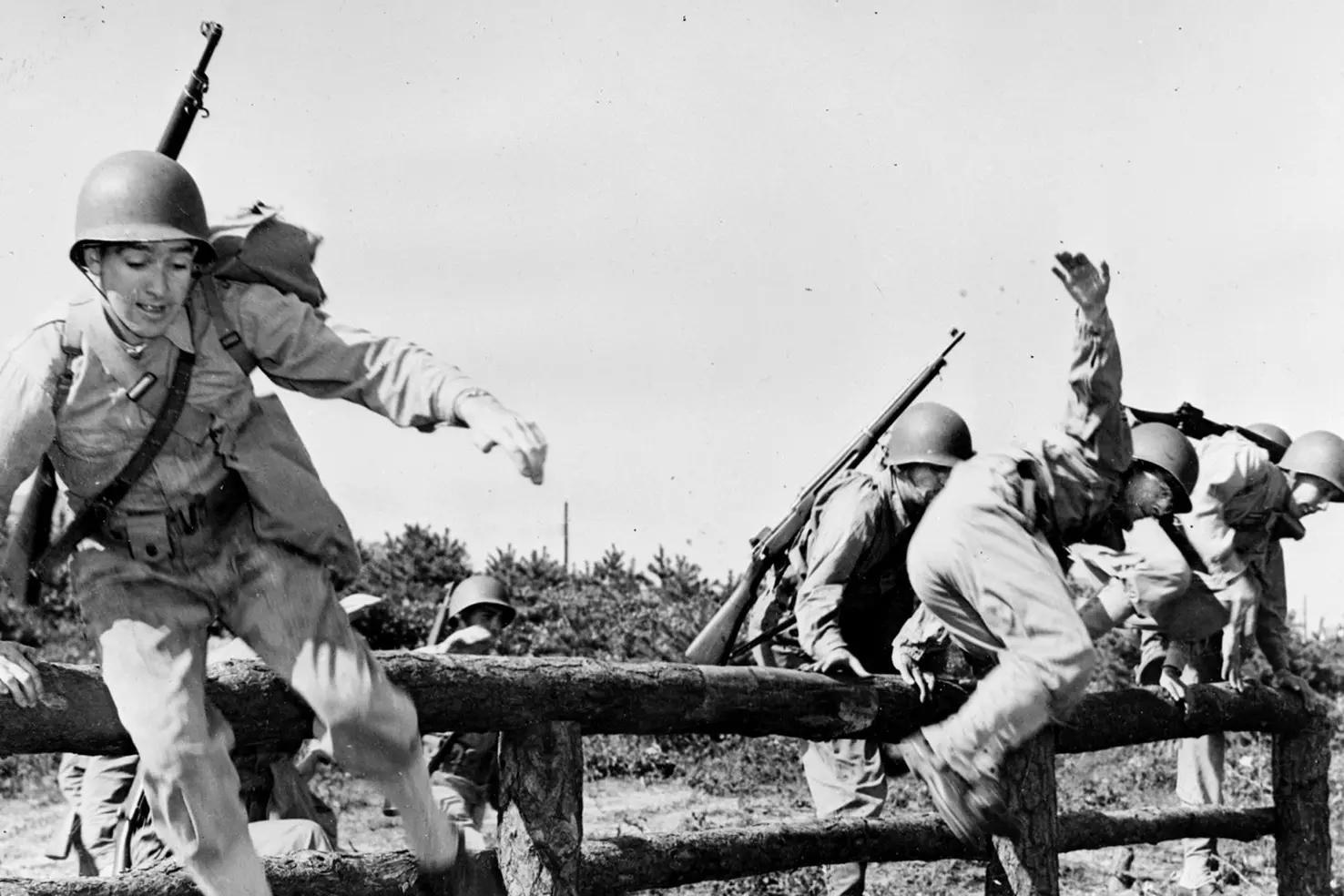
Lesser-Known Secrets of the U.S. in World War II: From Espionage to the Atomic Project
The United States officially entered World War II after the attack on Pearl Harbor in 1941, but their influence on the conflict began much earlier. Behind the grand battles lay amazing facts: secret operations, technological breakthroughs, and unexpected heroes. Some of these stories still remain in the shadows of textbooks.
- 01. Los Alamos — The Ghost Town for the Atomic Bomb
To create the first atomic bomb, the Americans built the secret city of Los Alamos in the New Mexico desert. Scientists, including Oppenheimer, lived in complete isolation, and their mail was censored by the military. Even the wives of some physicists did not know what their husbands were working on. - 02. "The Ghost Army" — The War of Illusions
The US used "fake" troops — the 23rd Headquarters Special Troops. They created inflatable tanks, fake airfields, and bogus radio communications to mislead the Germans. This operation remained classified until 1996! - 03. The First "Computer" Helped Build Bombs
The Harvard Mark I — one of the first electromechanical computers — was used for calculations in the Manhattan Project. Its operator was Grace Hopper, the future "mother" of programming. - 04. Coca-Cola — The "Weapon" of American Spirit
To boost morale, Coca-Cola supplied soda to soldiers for free. The company even built 64 bottling plants in combat zones. This helped Coke become a global brand after the war. - 05. German Prisoners of War Lived Better Than Black Soldiers
Thousands of German POWs were held in camps in the US. Surprisingly, some of them ate better than African American soldiers, who still faced segregation in the army. - 06. The First Cyberwar: Cracking Nazi Codes
Before the British cracked the Enigma, the Americans decrypted Japanese codes, helping win the Battle of Midway. The US Navy’s first "programmer," Agnes Meyer Driscoll, cracked Japanese codes as early as the 1920s! - 07. Hollywood Filmed Fake Towns to Save Real Ones
To protect American factories from bombing, the military hired film studios to create decoy ghost sets. For example, the Lockheed aircraft plant in California was disguised with painted roofs and fake houses, making it look like a normal neighborhood from the air. German spies never found it! - 08. "The Battle of Los Angeles": Army Fired at UFO (or Weather Balloon?)
In February 1942, just months after Pearl Harbor, Los Angeles air defenses opened fire on an unidentified object. Anti-aircraft guns fired 1,400 rounds but never hit. The official version: a weather balloon, but conspiracy theorists still believe it was Japanese saboteurs or even aliens. - 09. American Soldiers Ate... Plastic Food
Before the Normandy landing, the US army needed non-perishable food. This led to the creation of the "K-ration" — the prototype of modern MREs. It included "plastic" bread (made from soy flour), chocolate that didn’t melt, and Lucky Strike cigarettes — "to calm nerves." - 10. The World’s First Cruise Missile — The American "Buzz Bomb"
Long before the German V-1, the US developed the JB-2 Loon — an almost exact copy of the "Fau-1." It was planned to be used in the invasion of Japan, but the war ended sooner. Later, it became the basis for the first American cruise missiles. - 11. "Project Pigeon": Bird-Guided Bombs
Psychologist Burrhus Skinner proposed controlling bombs using... trained pigeons! The birds were taught to peck at a screen, keeping the target in the crosshairs. The project was shut down as "too strange," but the idea inspired modern guidance systems. - 12. Combat Dolphins in Navy Service
Even before the famous Navy SEALs, the US Navy experimented with trained dolphins! They were taught to locate mines and even attack enemy divers. The project was discontinued but revived in the 1960s during the Vietnam War. - 13. "Project X-Ray": Bat Kamikazes
The Americans developed a plan to bomb Japan using bats! Small incendiary bombs were attached to the bats, which were supposed to ignite wooden Japanese cities. Tests were successful (the bats accidentally burned a hangar in New Mexico), but the project was cancelled — the atomic bomb was "more effective." - 14. "The War of Smells": Chemists vs. Nazis
Harvard scientists developed "stink bombs" — chemical mixtures intended to cause panic, nausea, or even homosexual attraction among Germans (yes, this was a real project!). The "most successful" formula smelled like "rotting flesh and dirty socks." - 15. "The Ice Aircraft Carrier": The Crazy Habbakuk Project
Britain and the US seriously planned to build a giant aircraft carrier from ice and wood pulp ("pykrete")! The 600-meter-long ship was meant to be torpedo-proof. A prototype was built in Canada, but the project was scrapped due to high costs.
War is not just tanks and airplanes. Behind the scenes of World War II were technological marvels, tricks, and even absurd situations that changed history. The US played a key role not only on the battlefield but also in laboratories, secret factories, and the minds of brilliant inventors.
Want more? Here’s a bonus: during the war, Americans developed a "Nazi smell" — a chemical compound meant to cause panic among Germans. But the project was shut down — it was too inhumane!
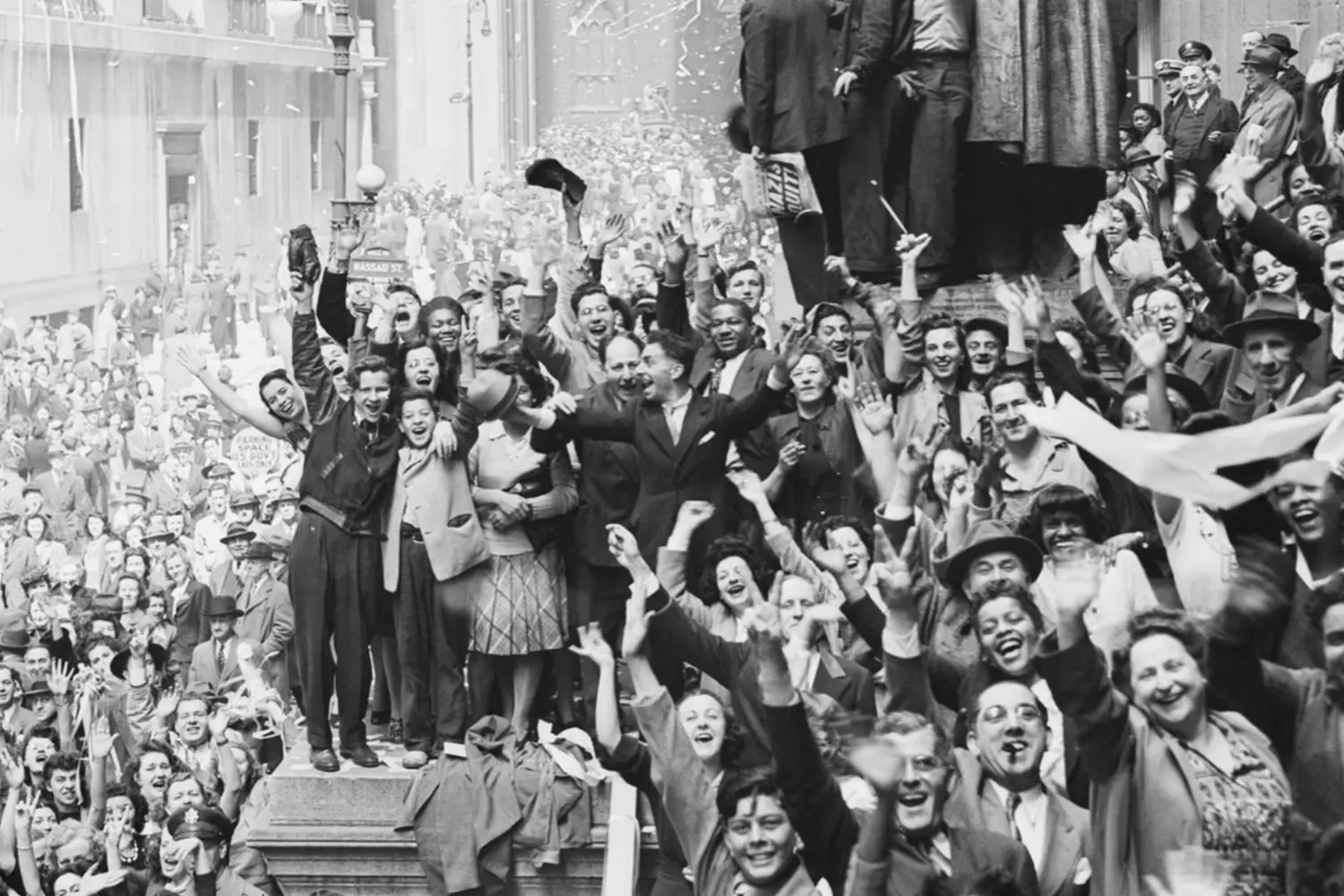
History You Must See with Your Own Eyes — Experience It with American Butler
America is not just about skyscrapers and Hollywood. It is also a country with a deep history, especially when it comes to World War II. Memorials, museums, former military bases, atomic laboratories, ships — all of these can be seen firsthand.
American Butler carefully and respectfully organizes historical tours for you to places connected to the war. You won’t just see — you will feel the magnitude of the events that shaped the course of the 20th century.














